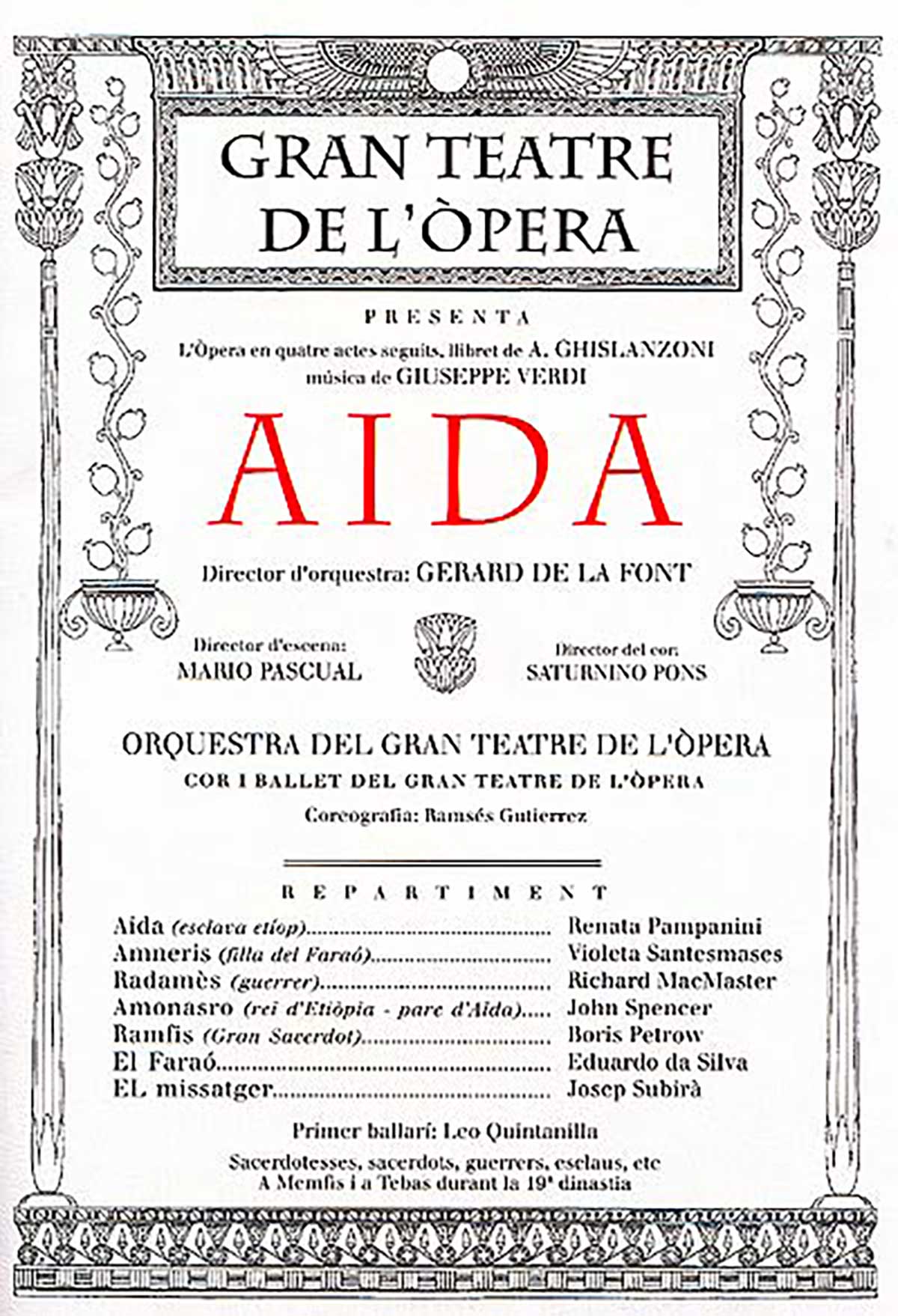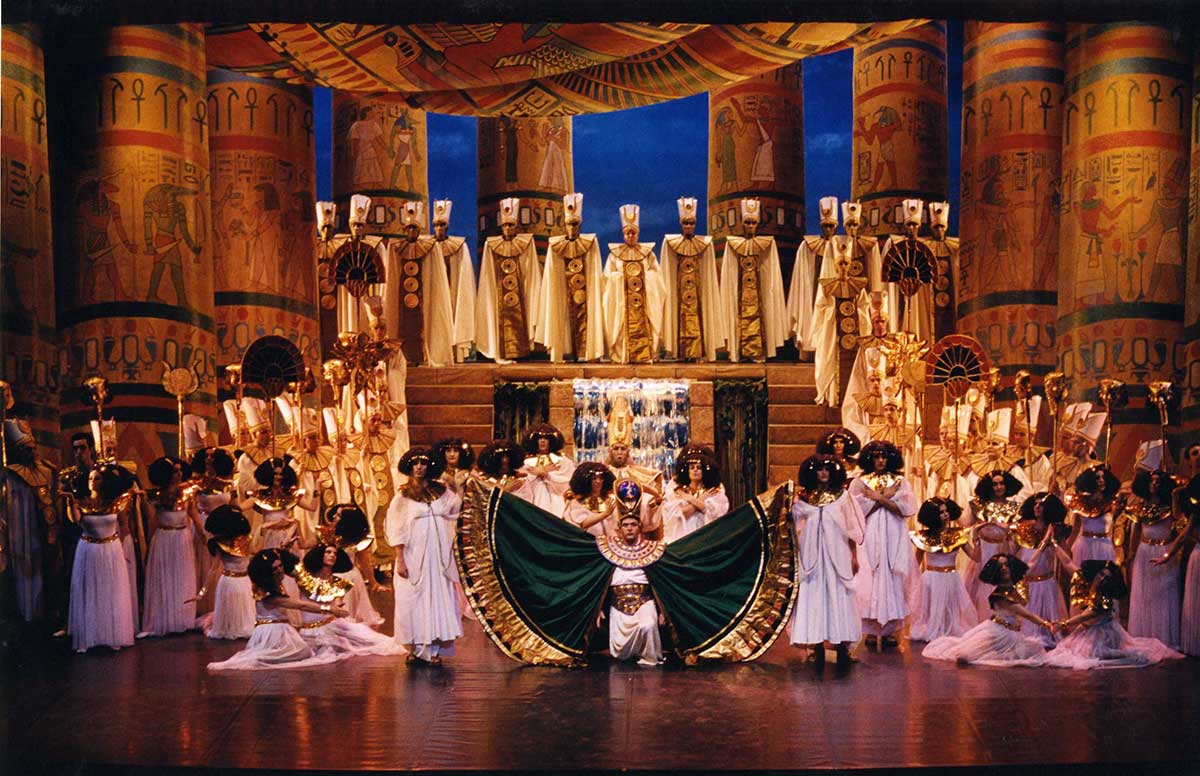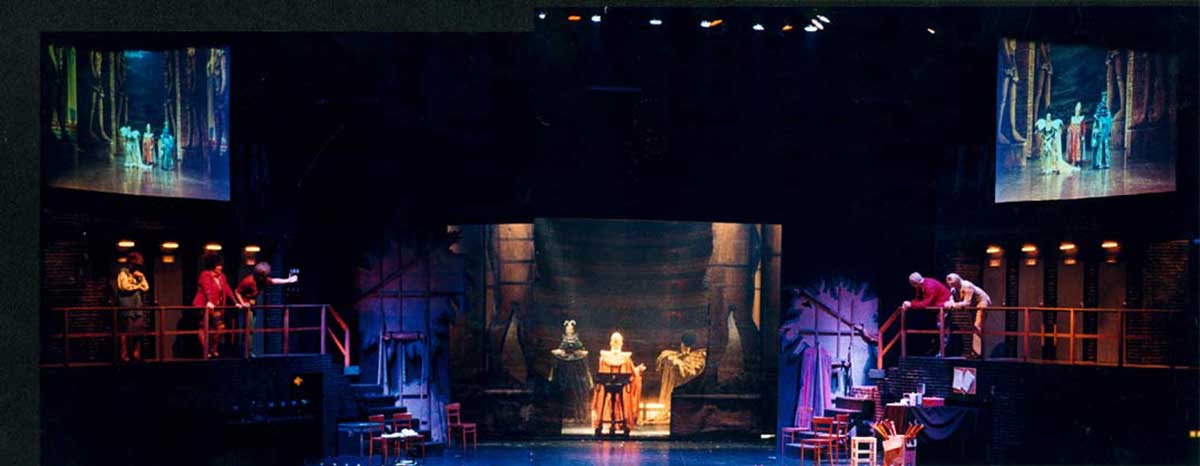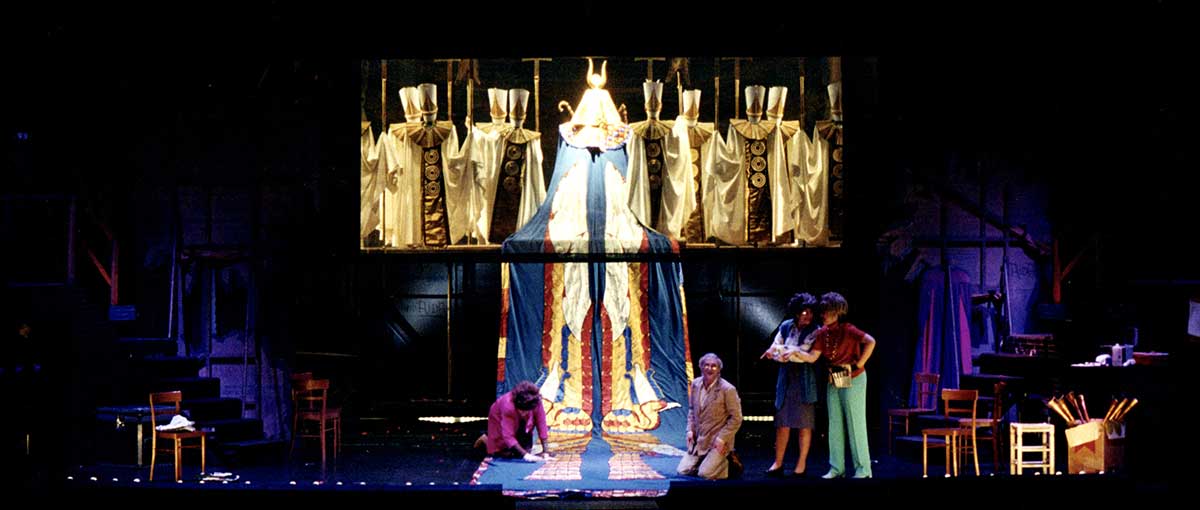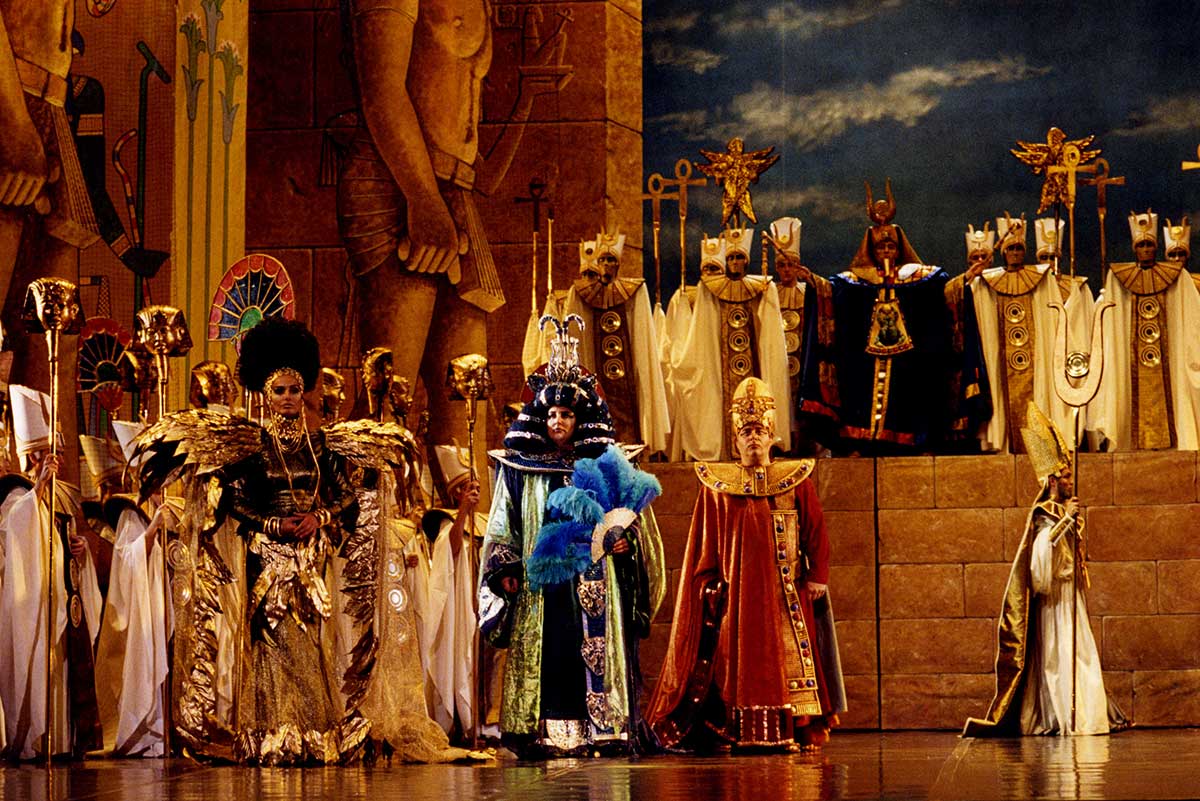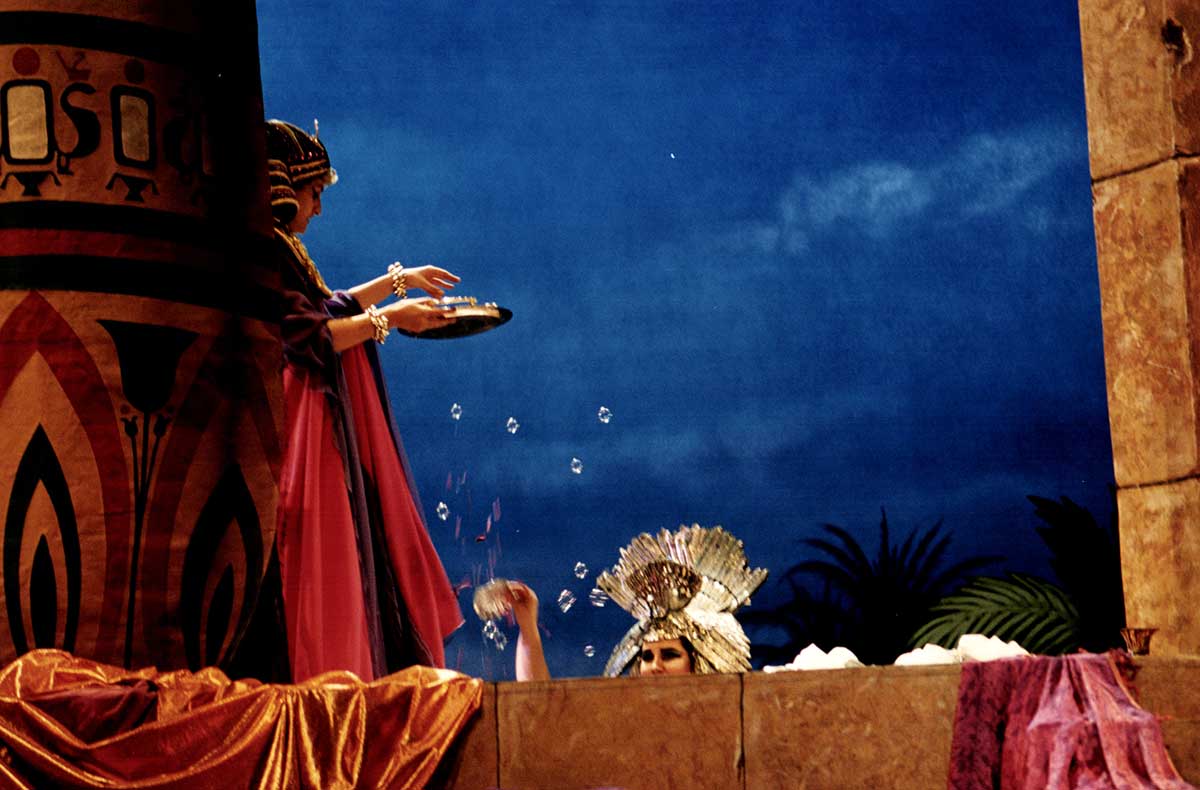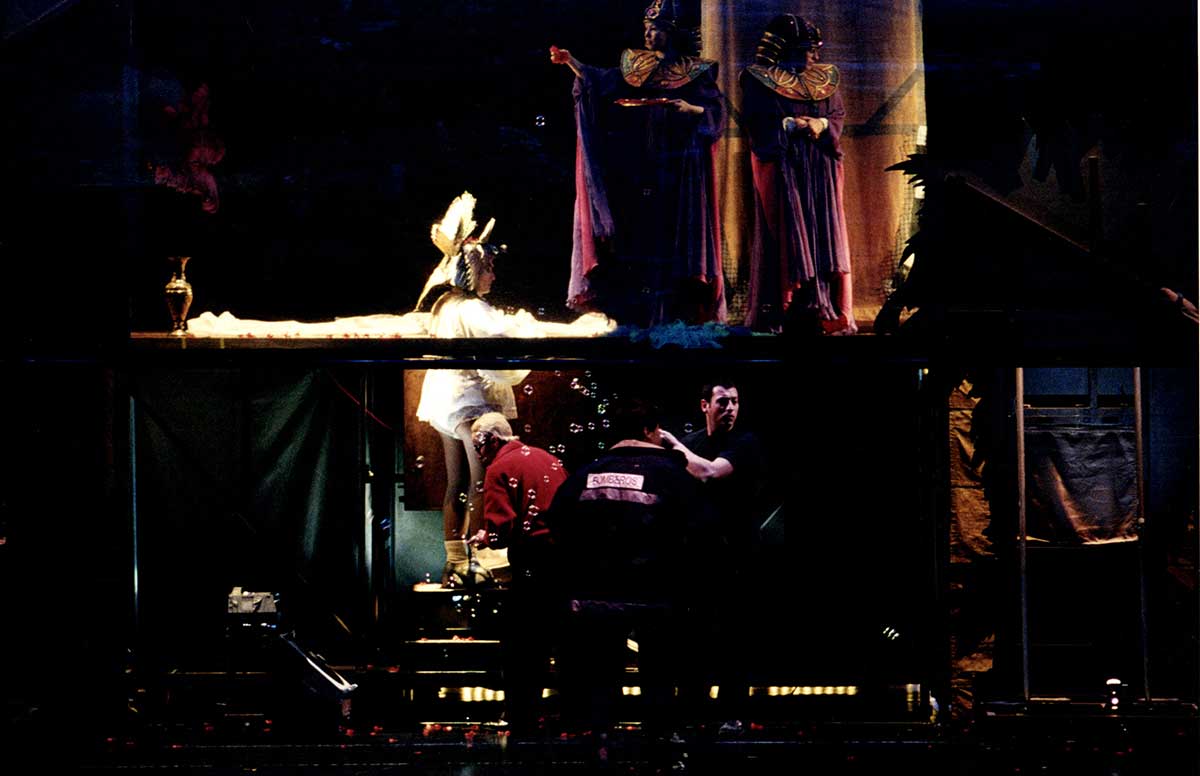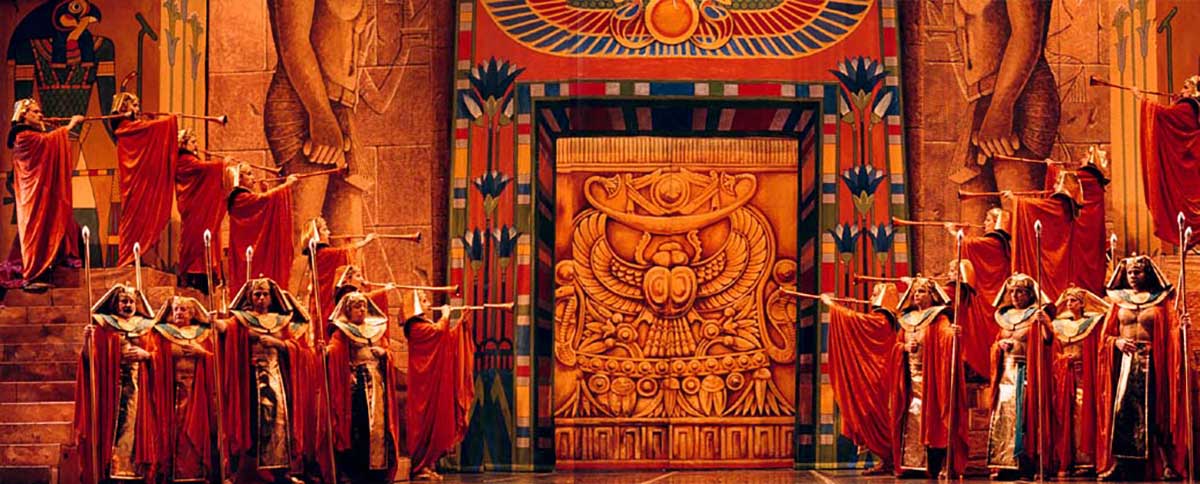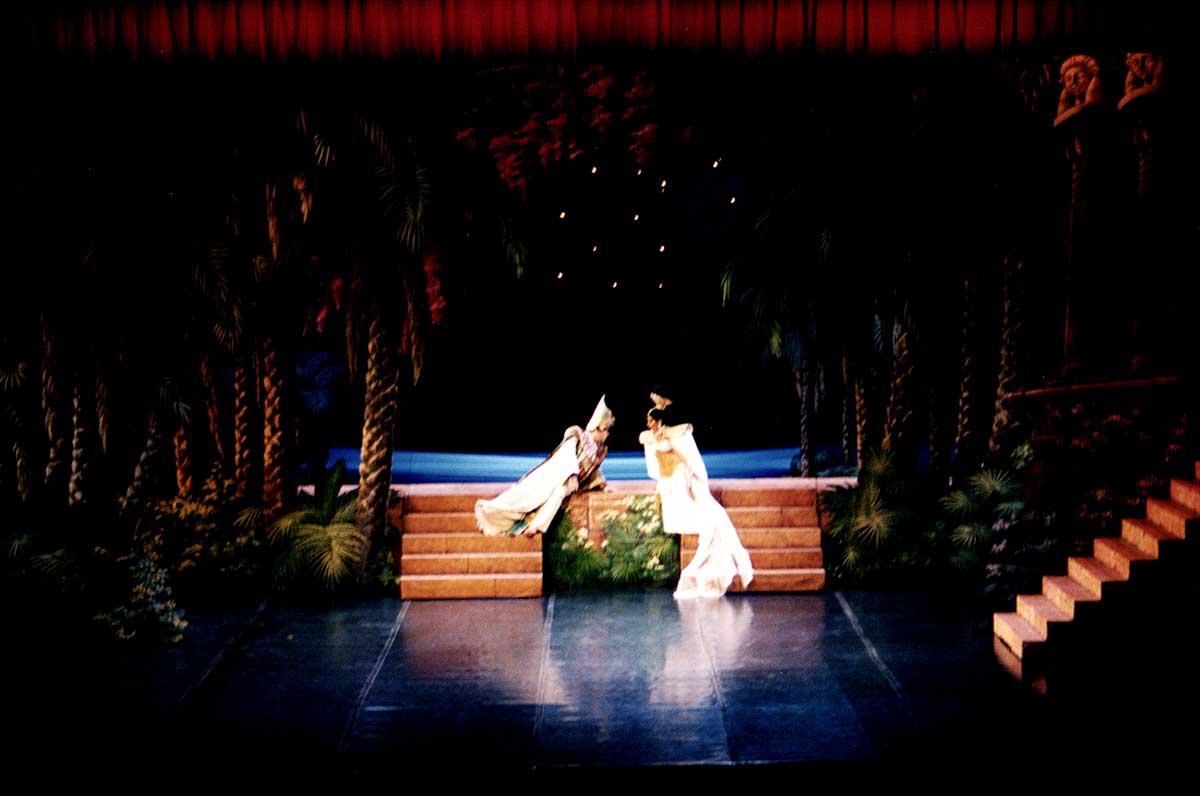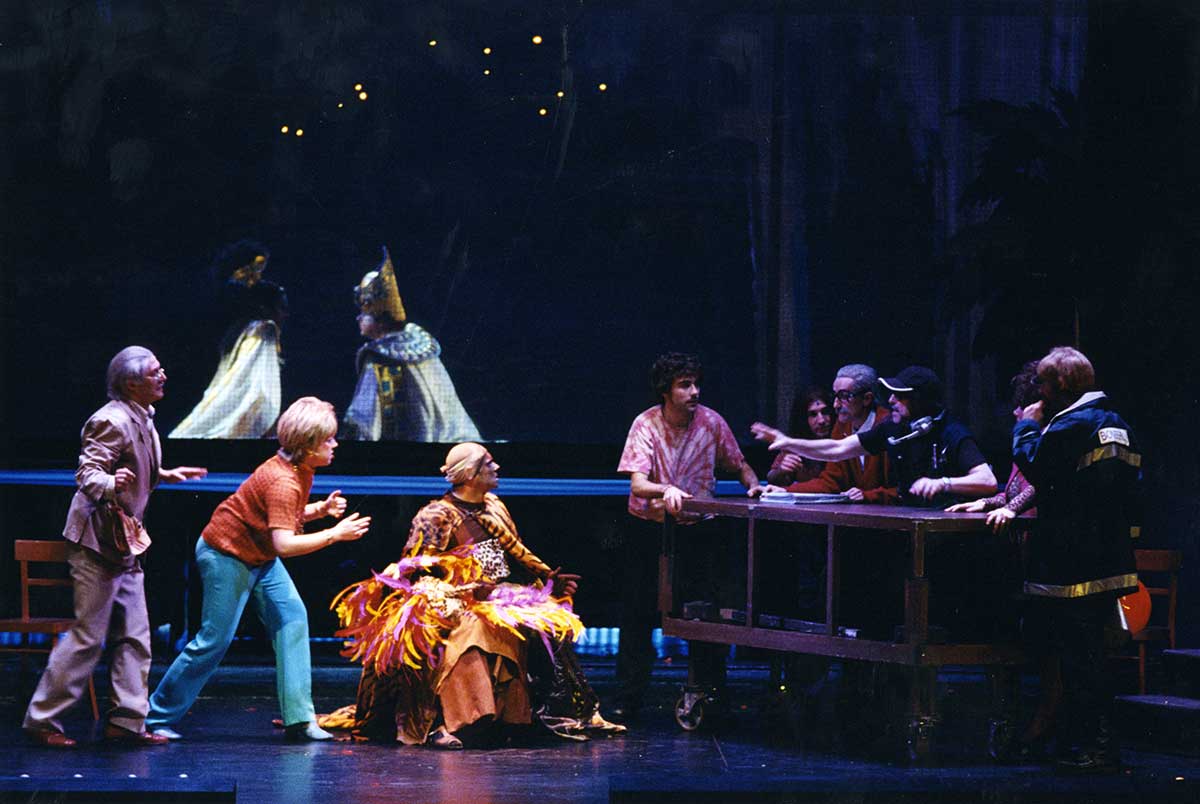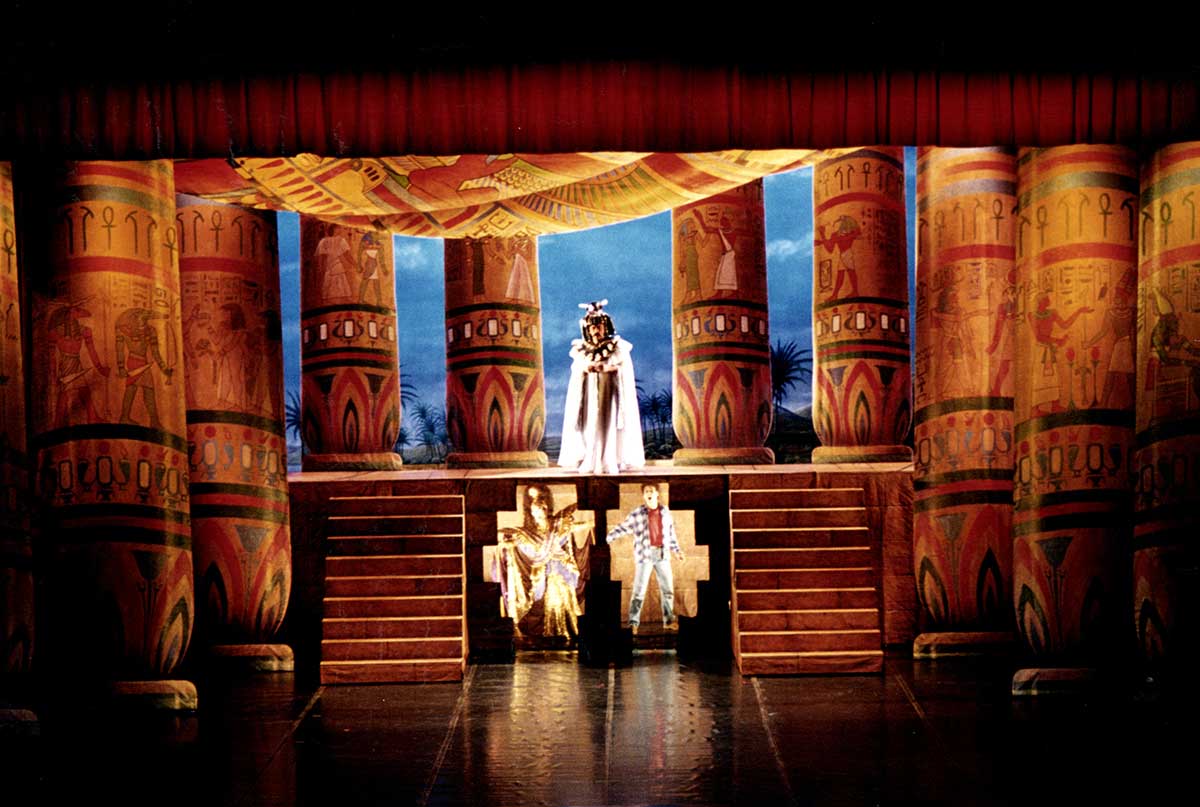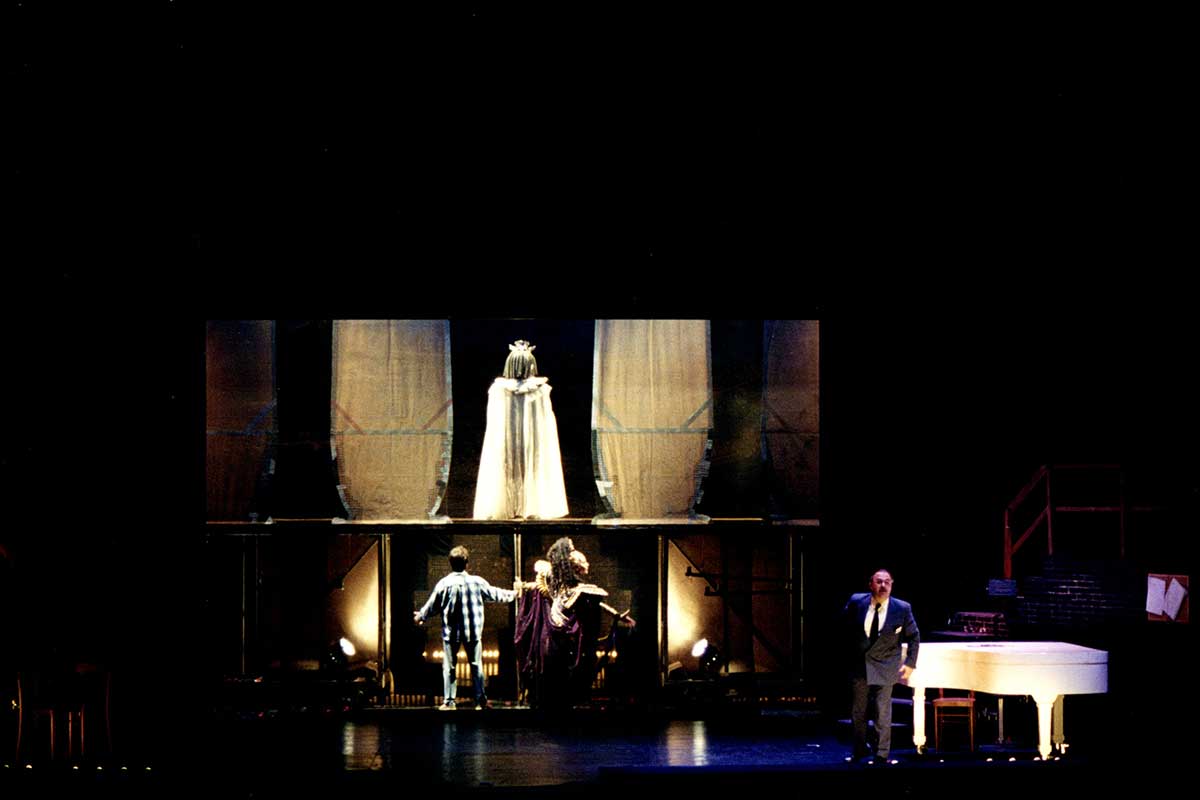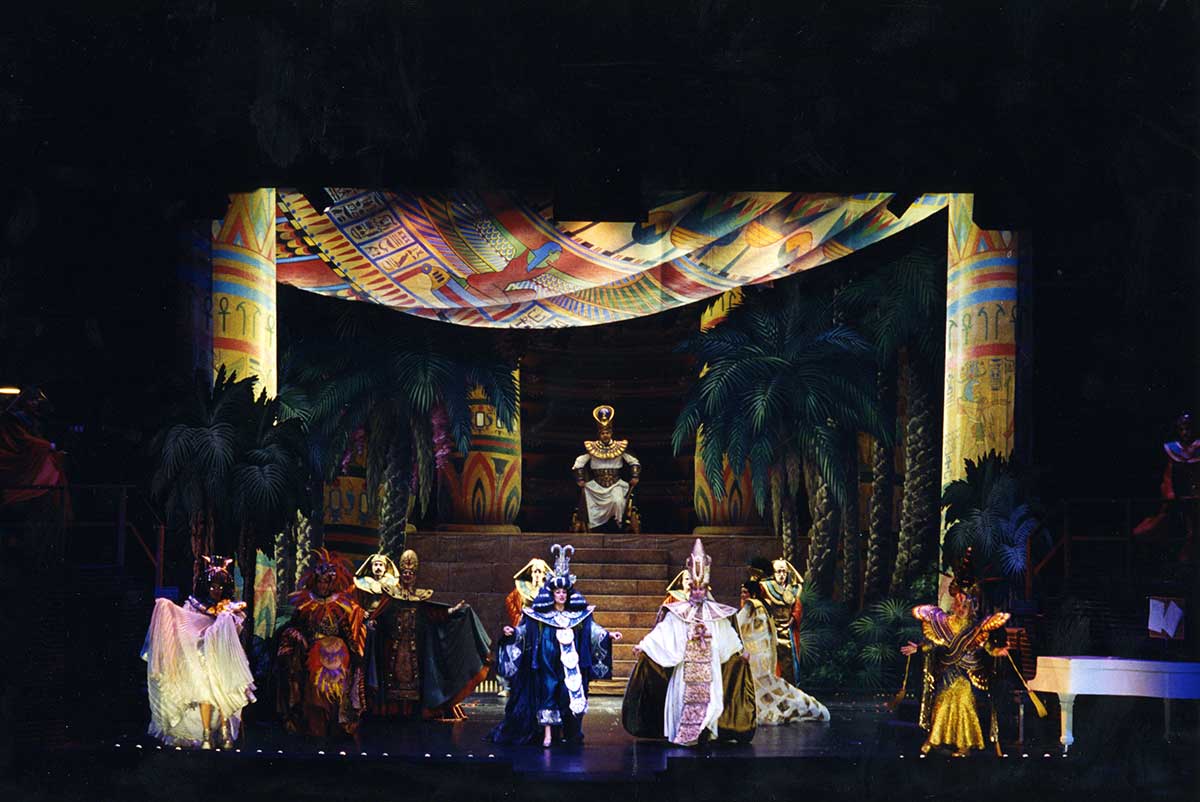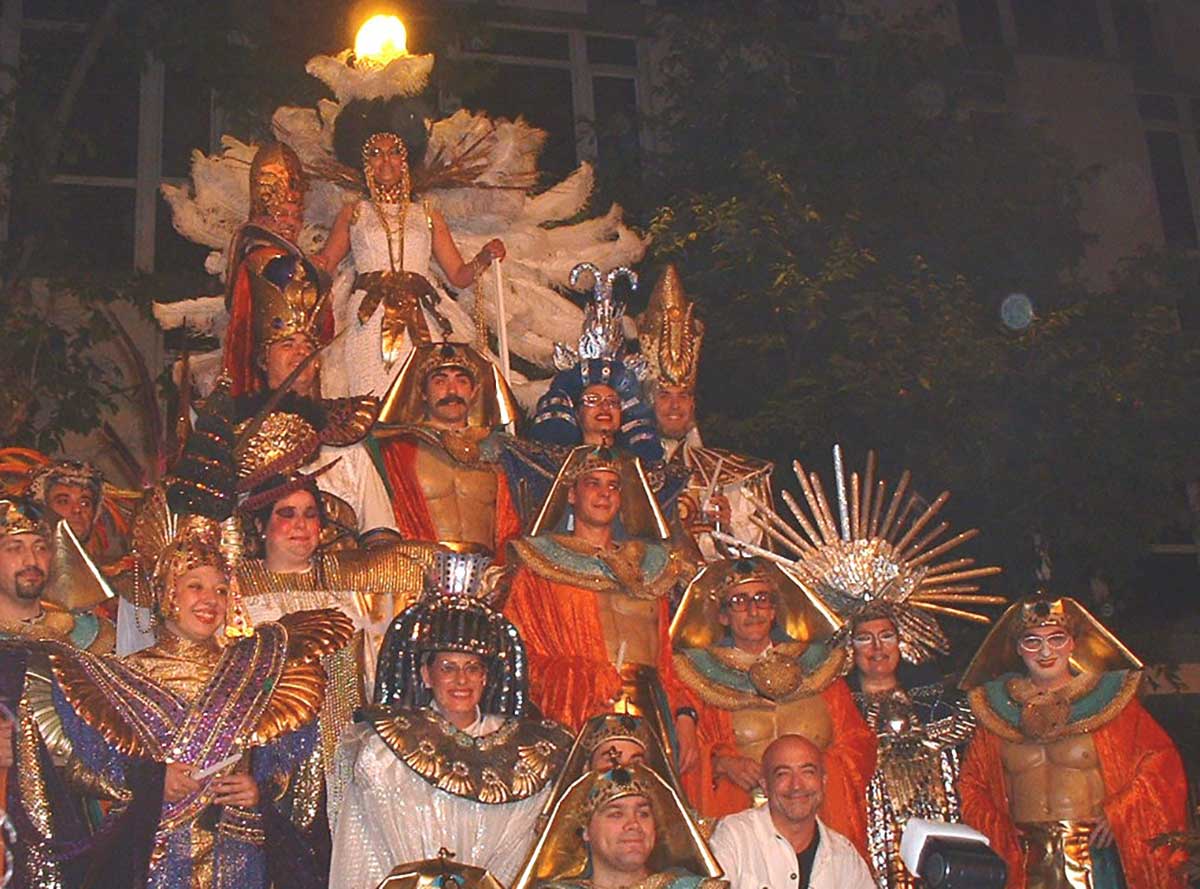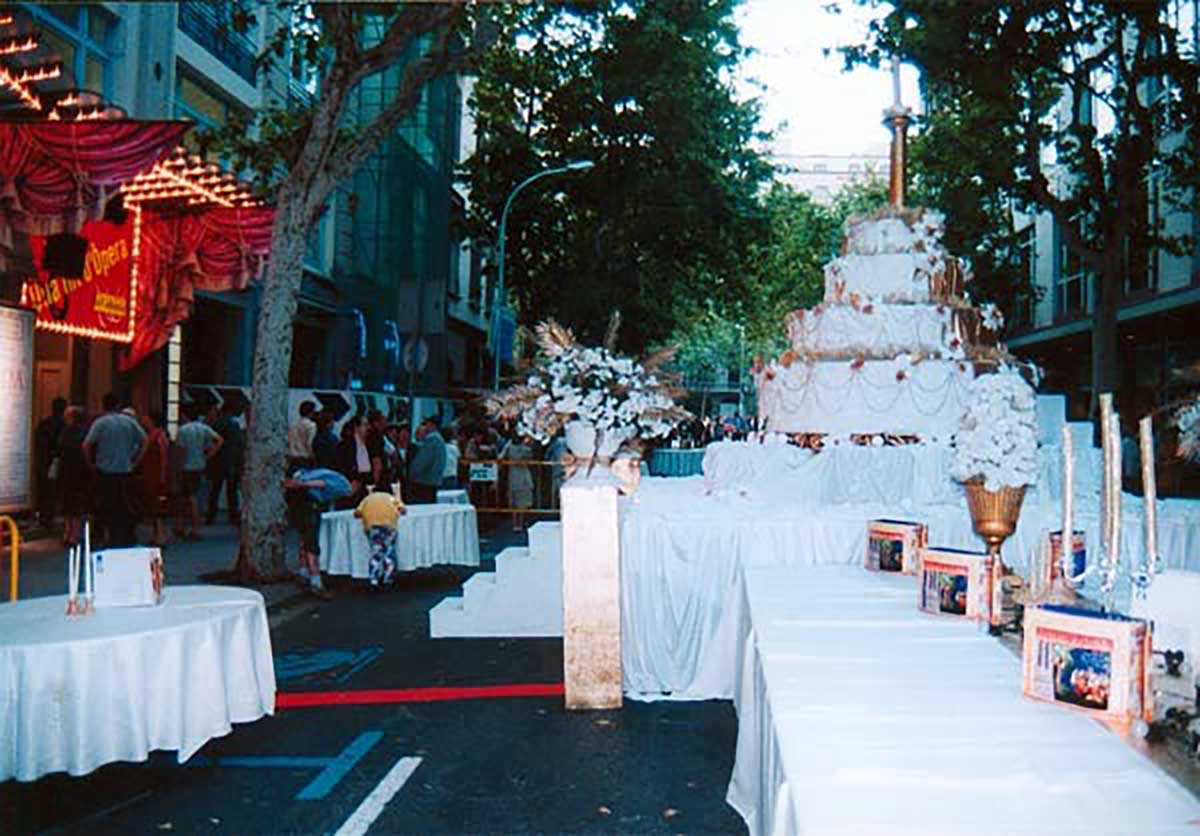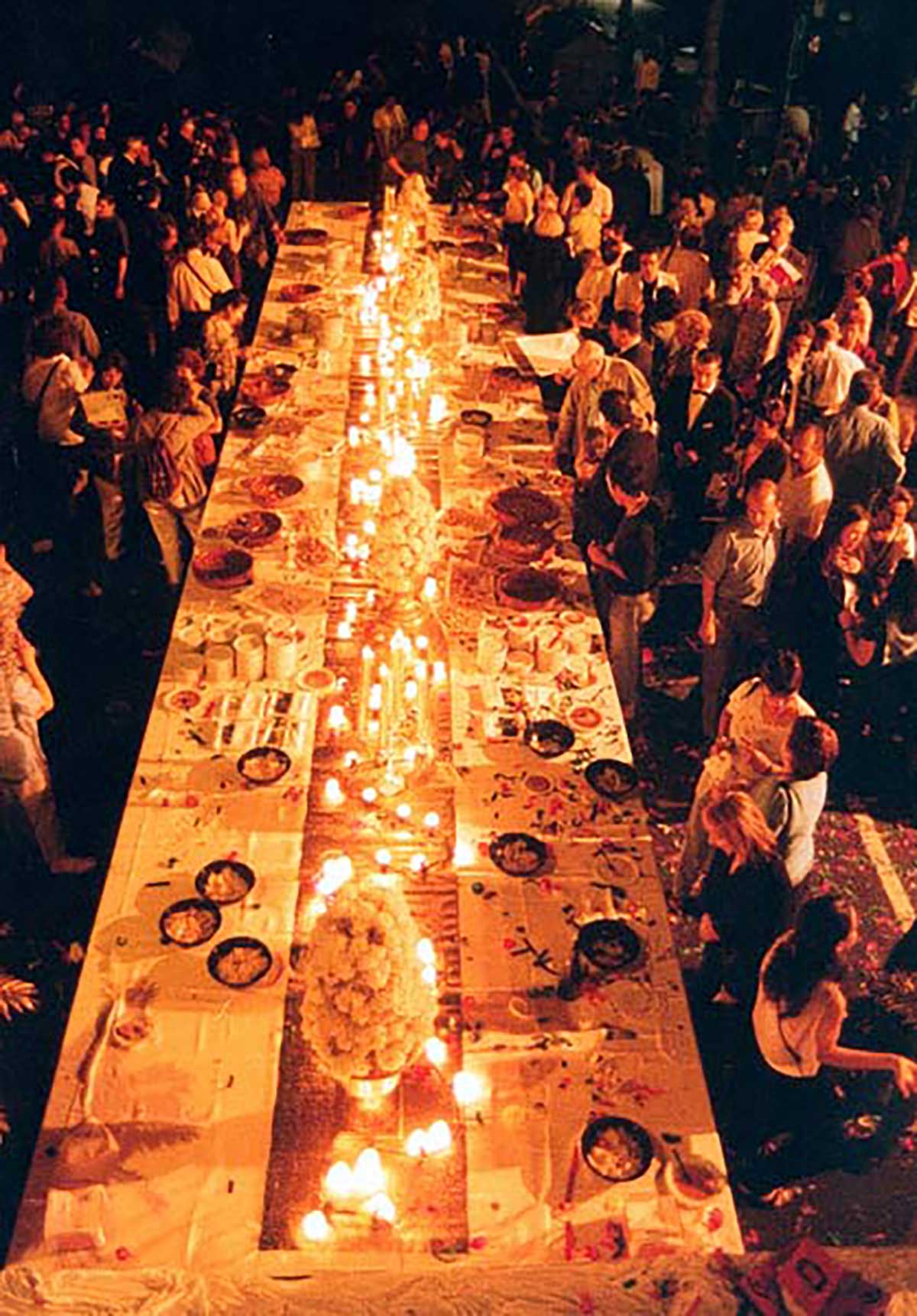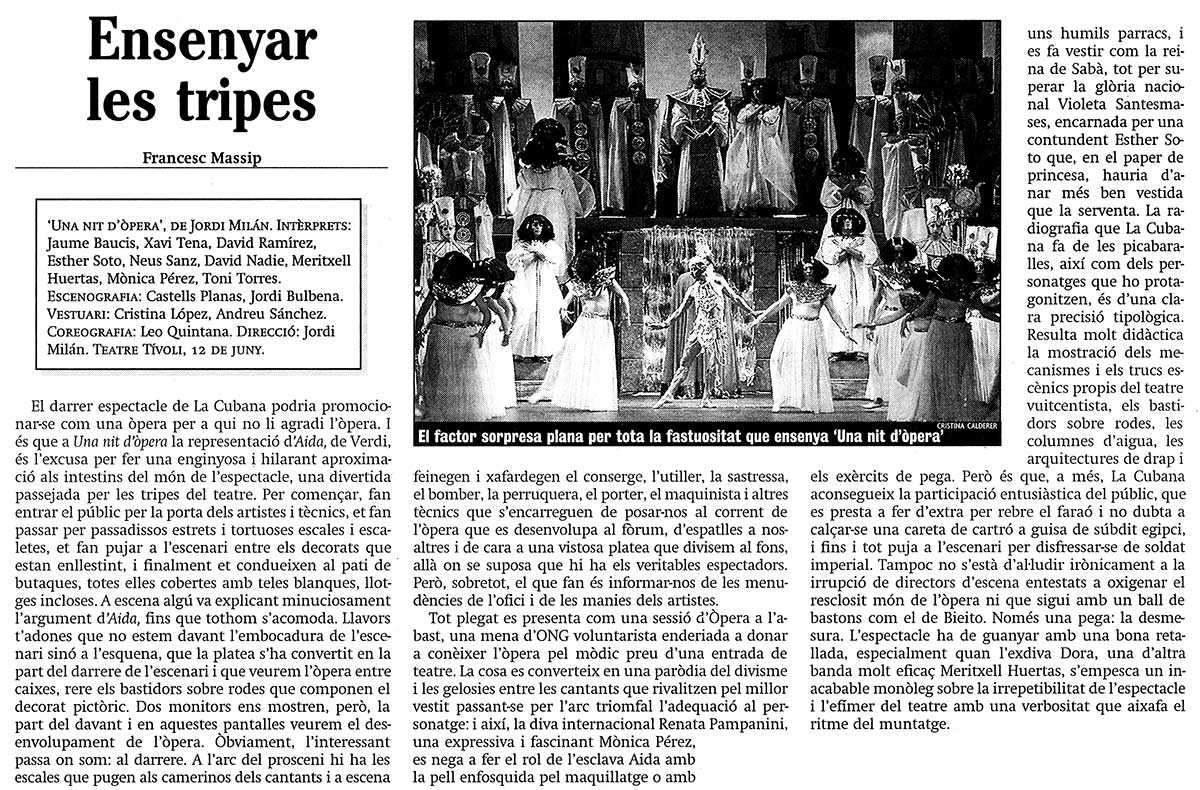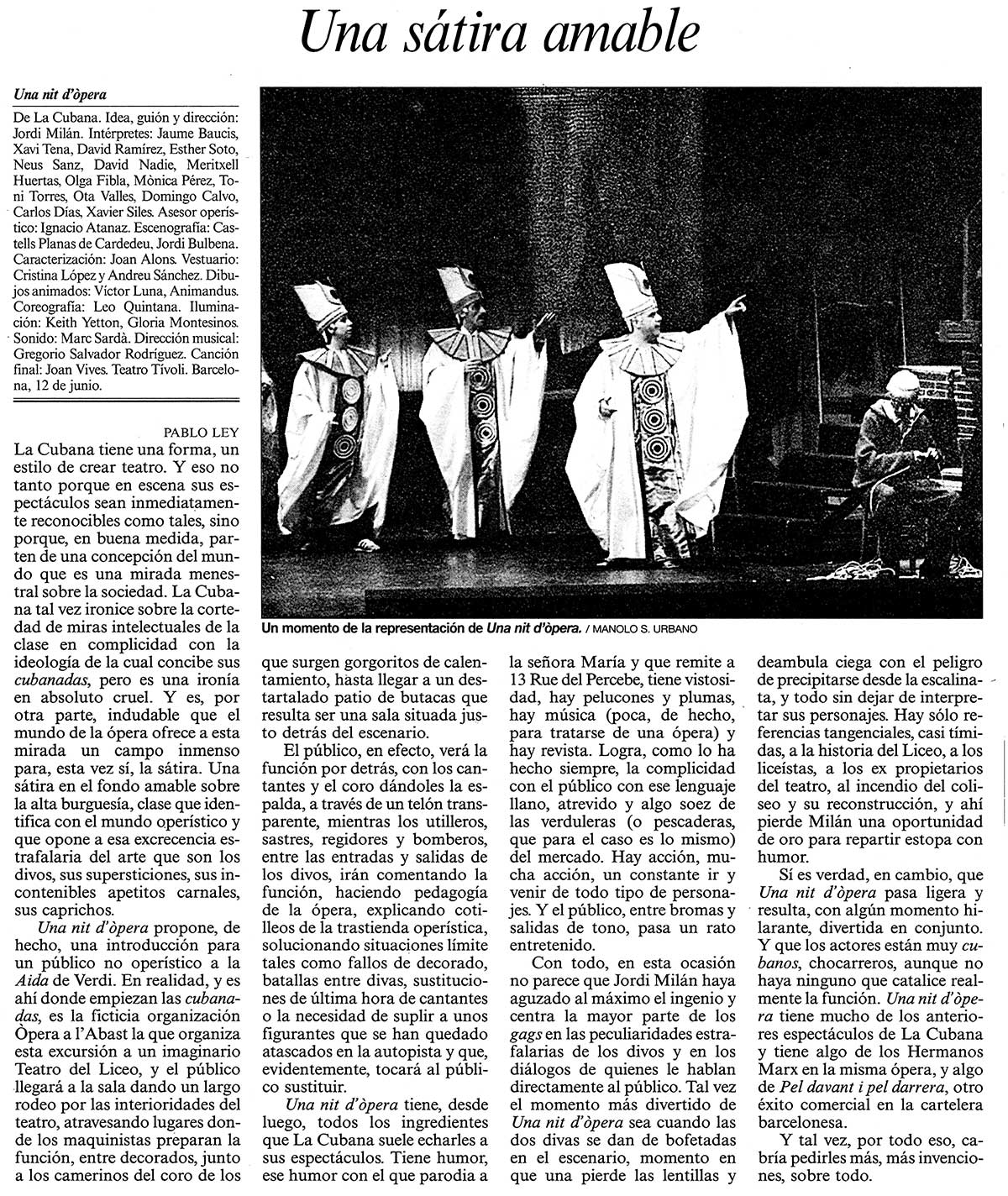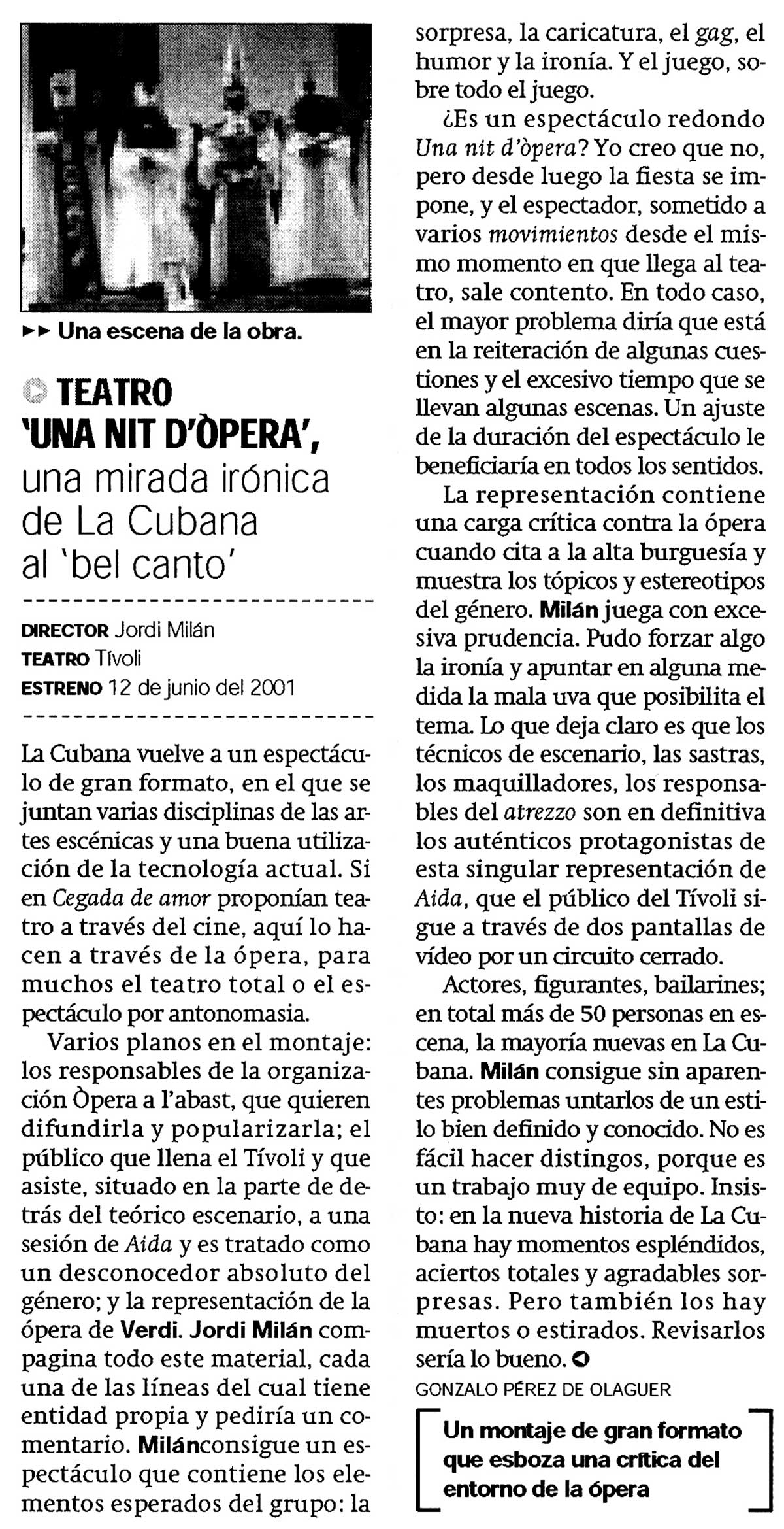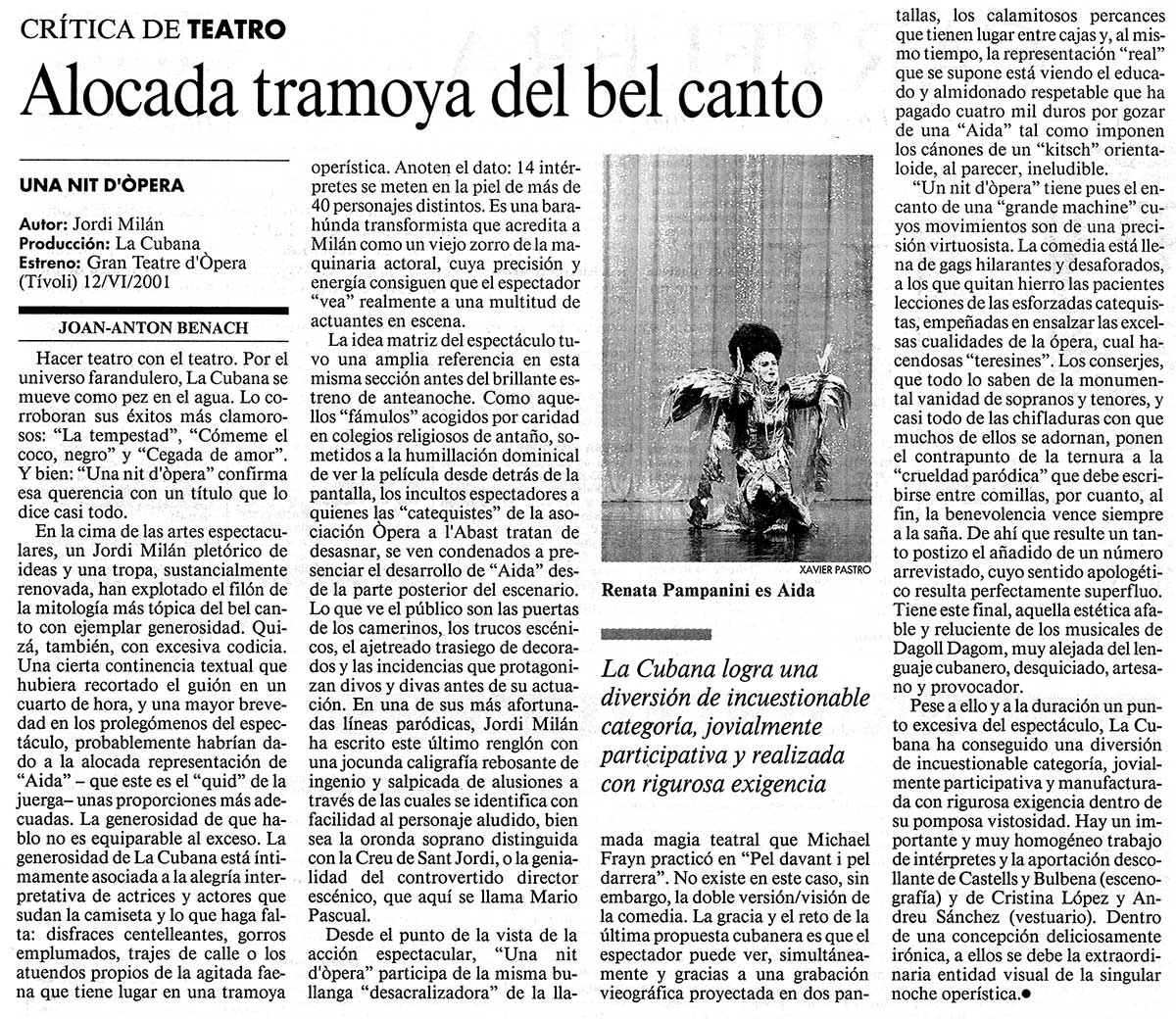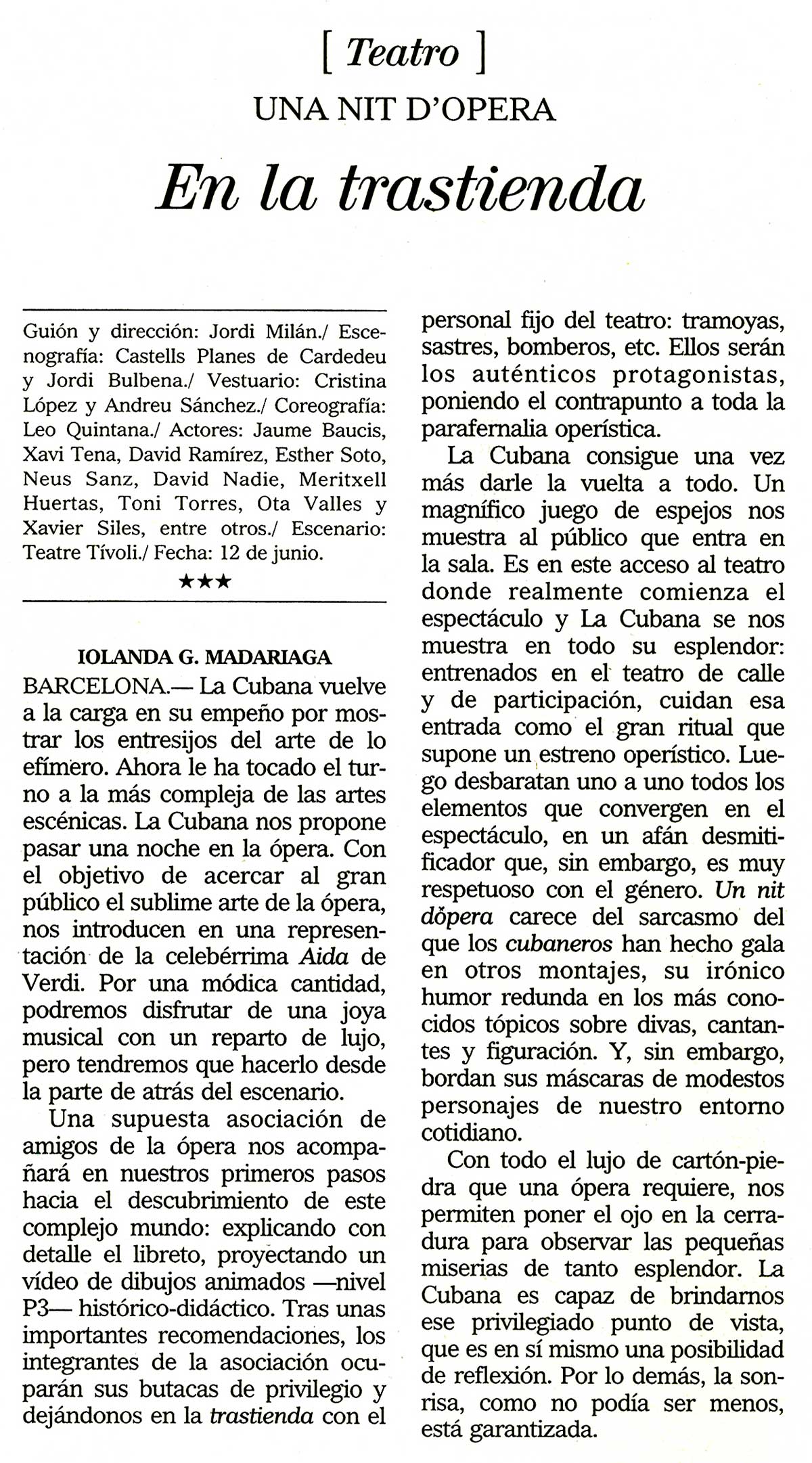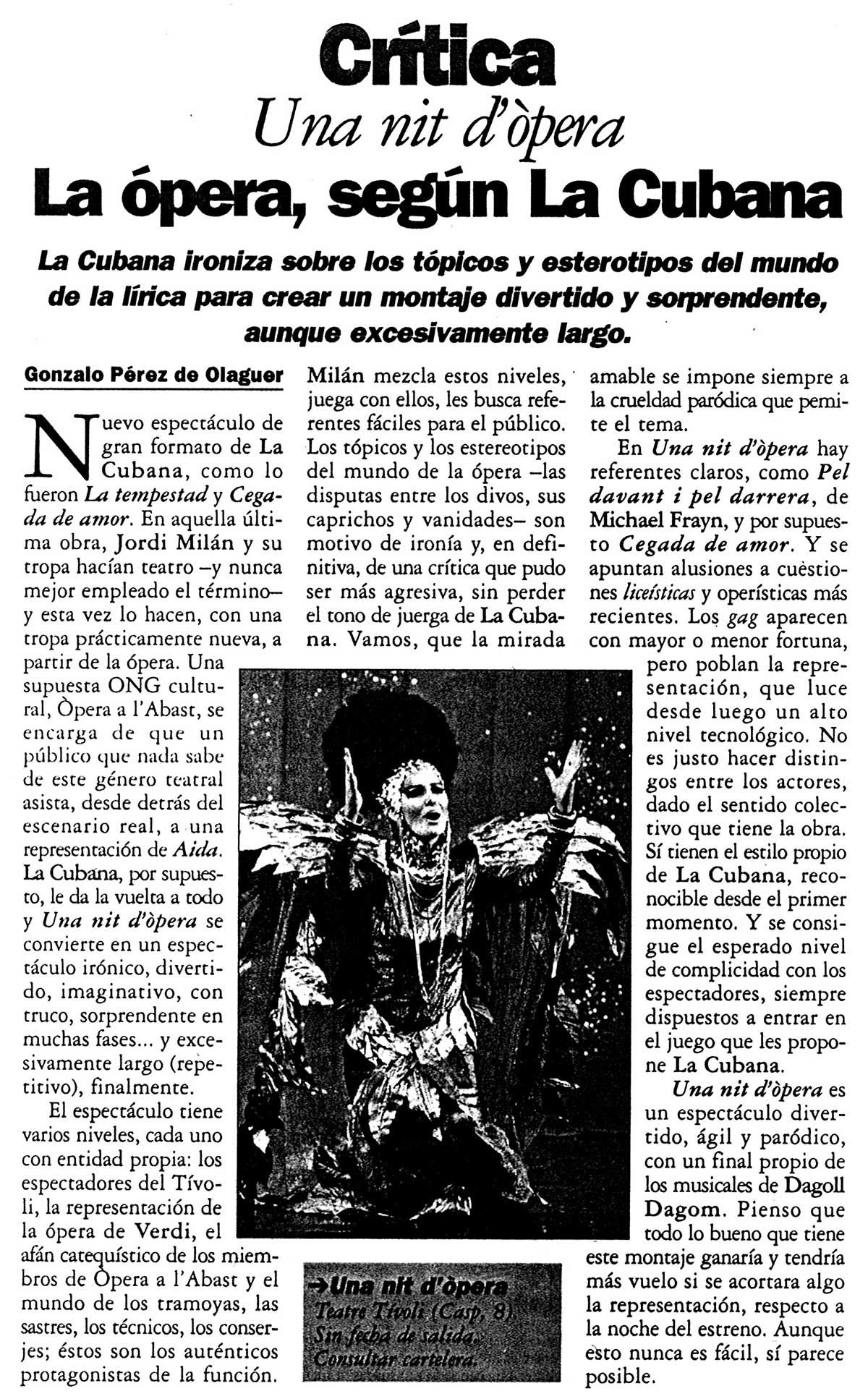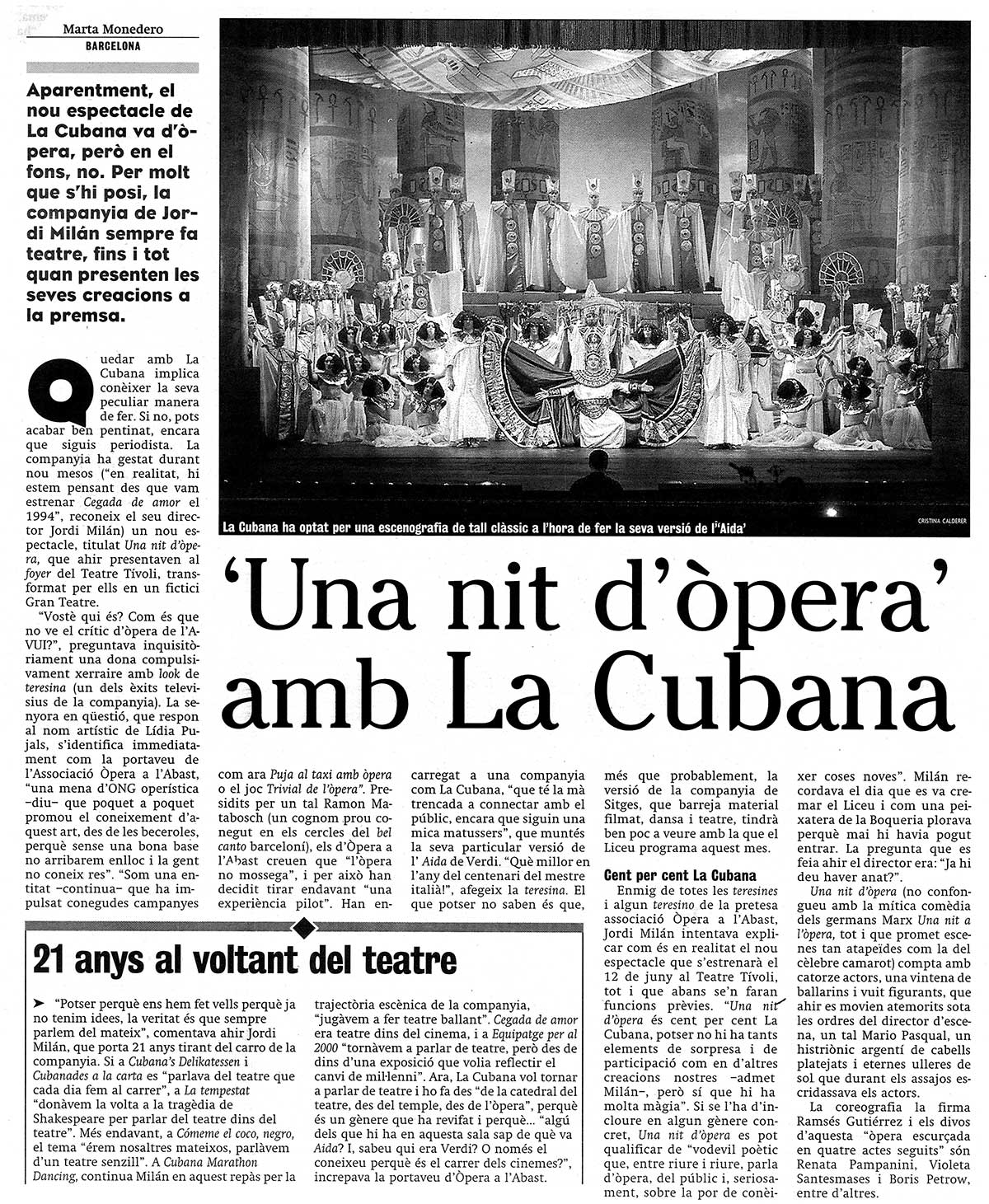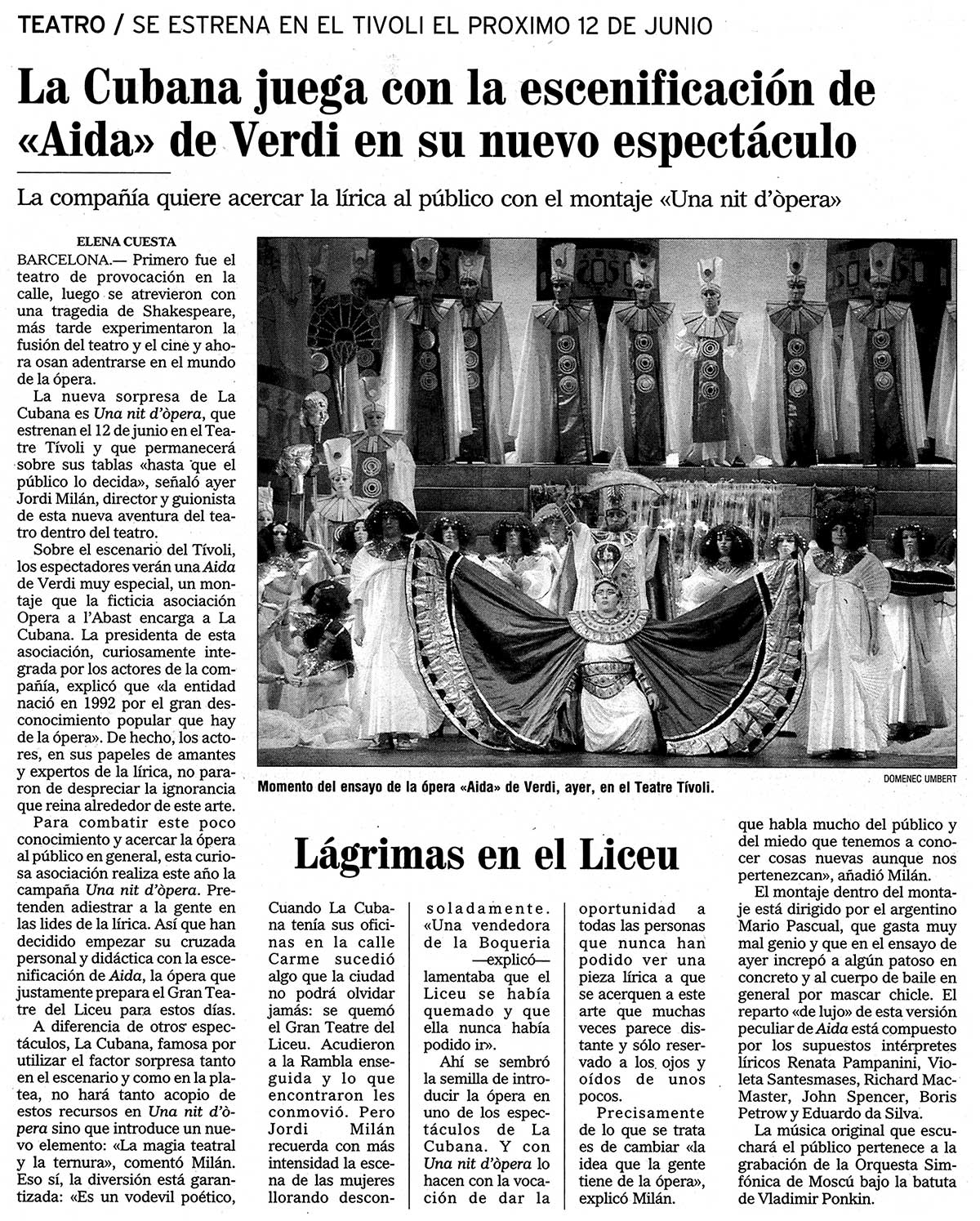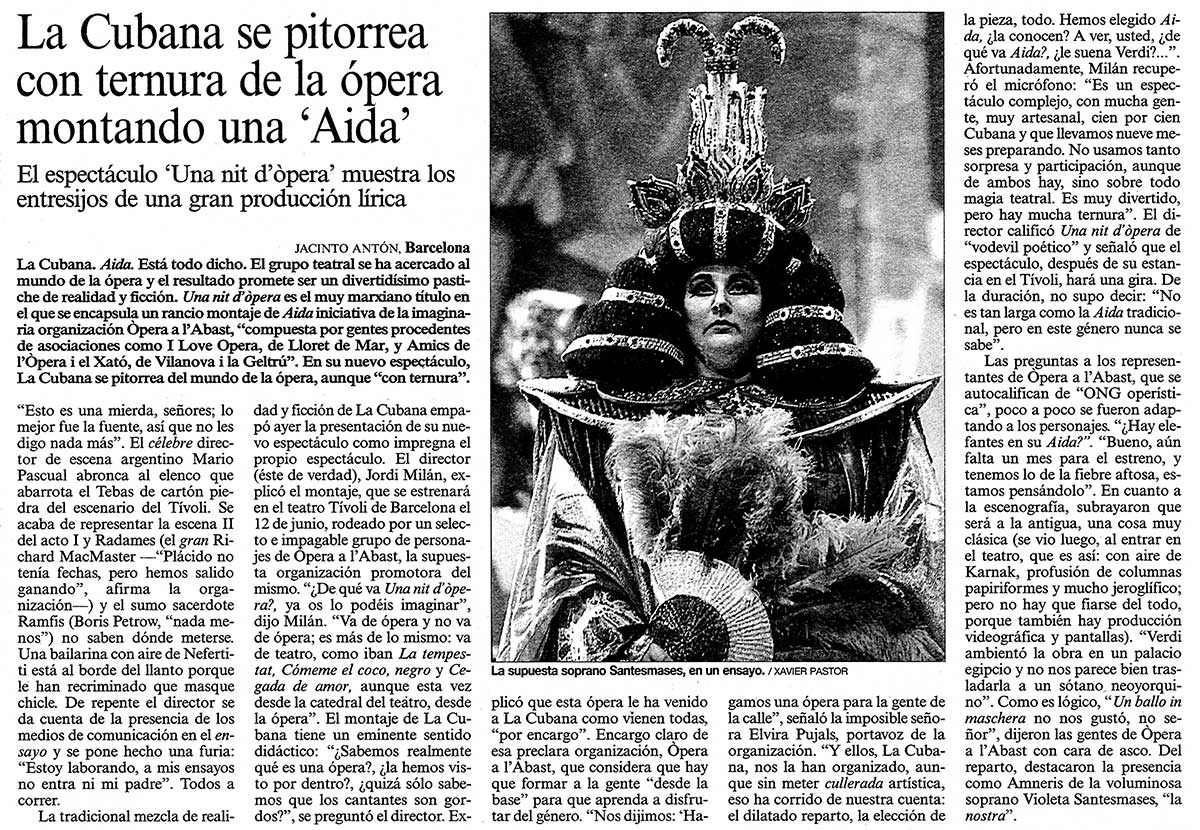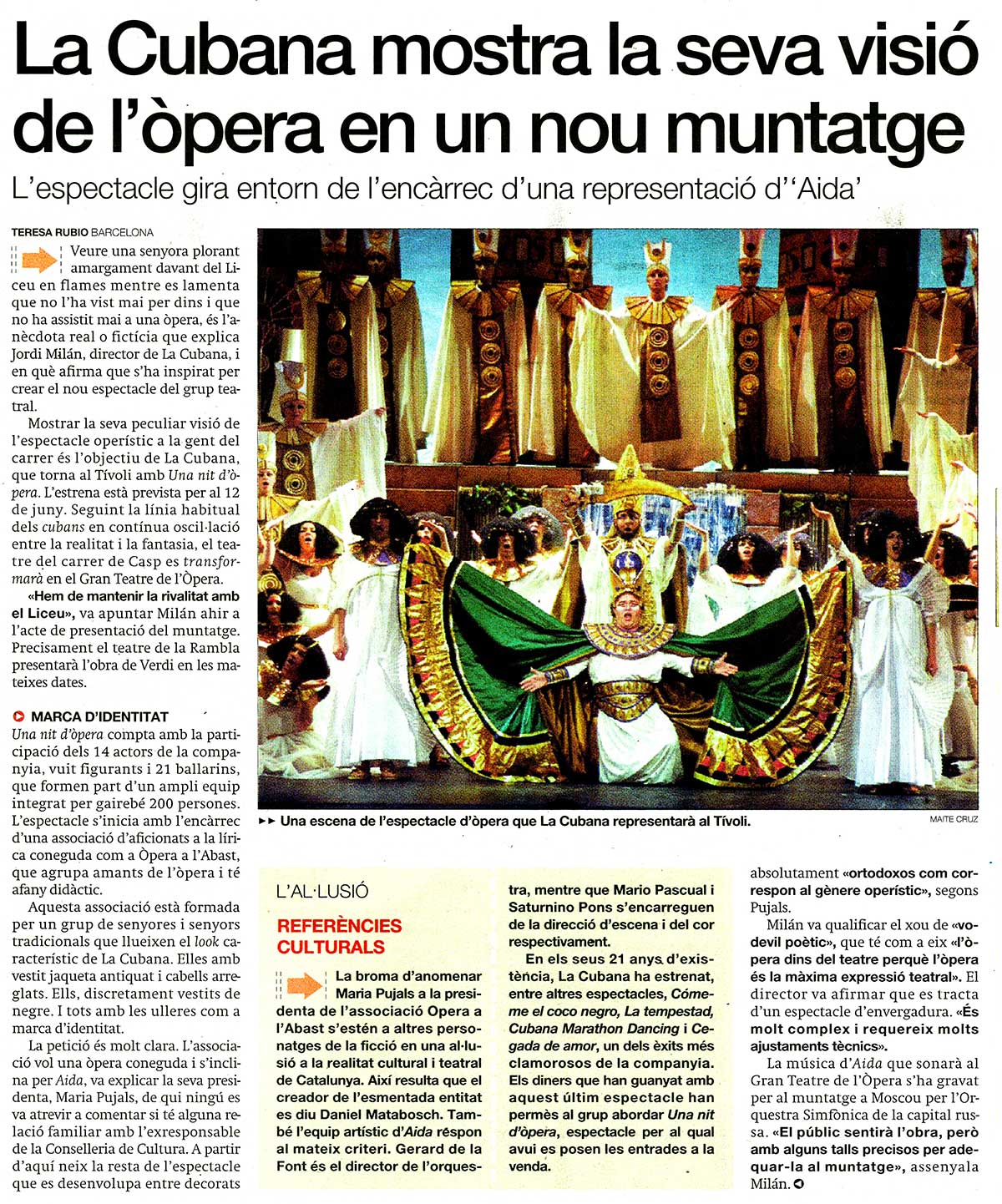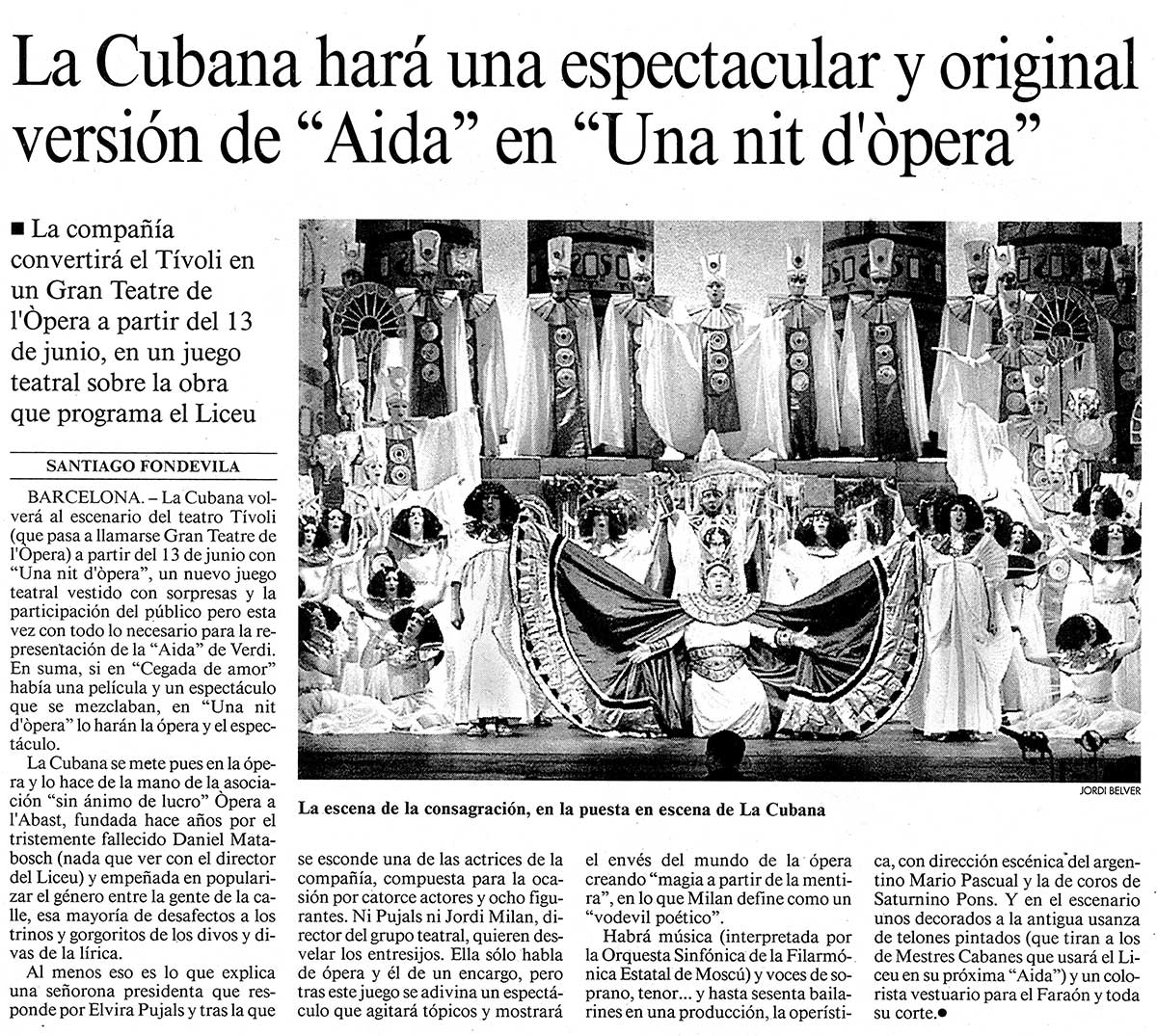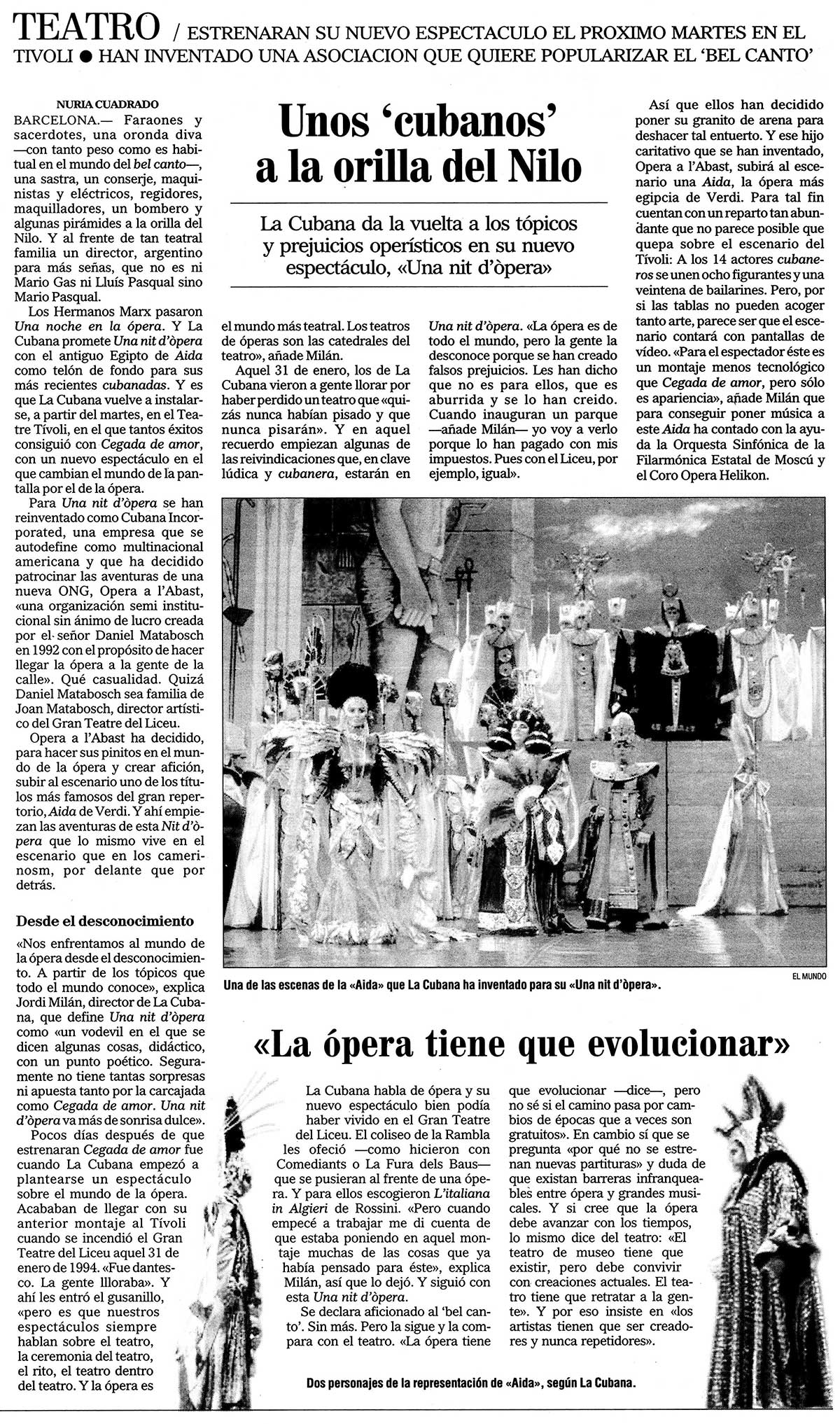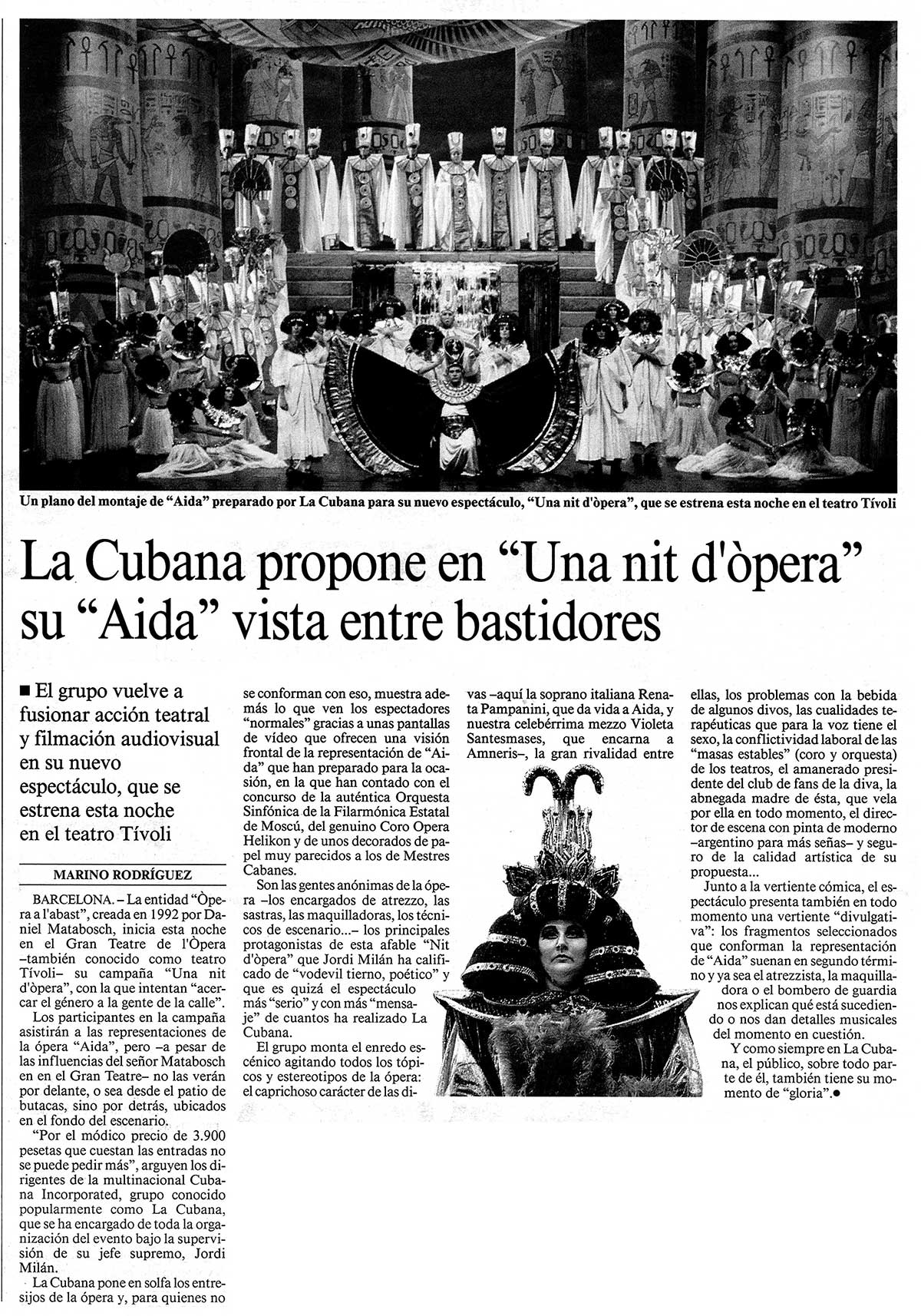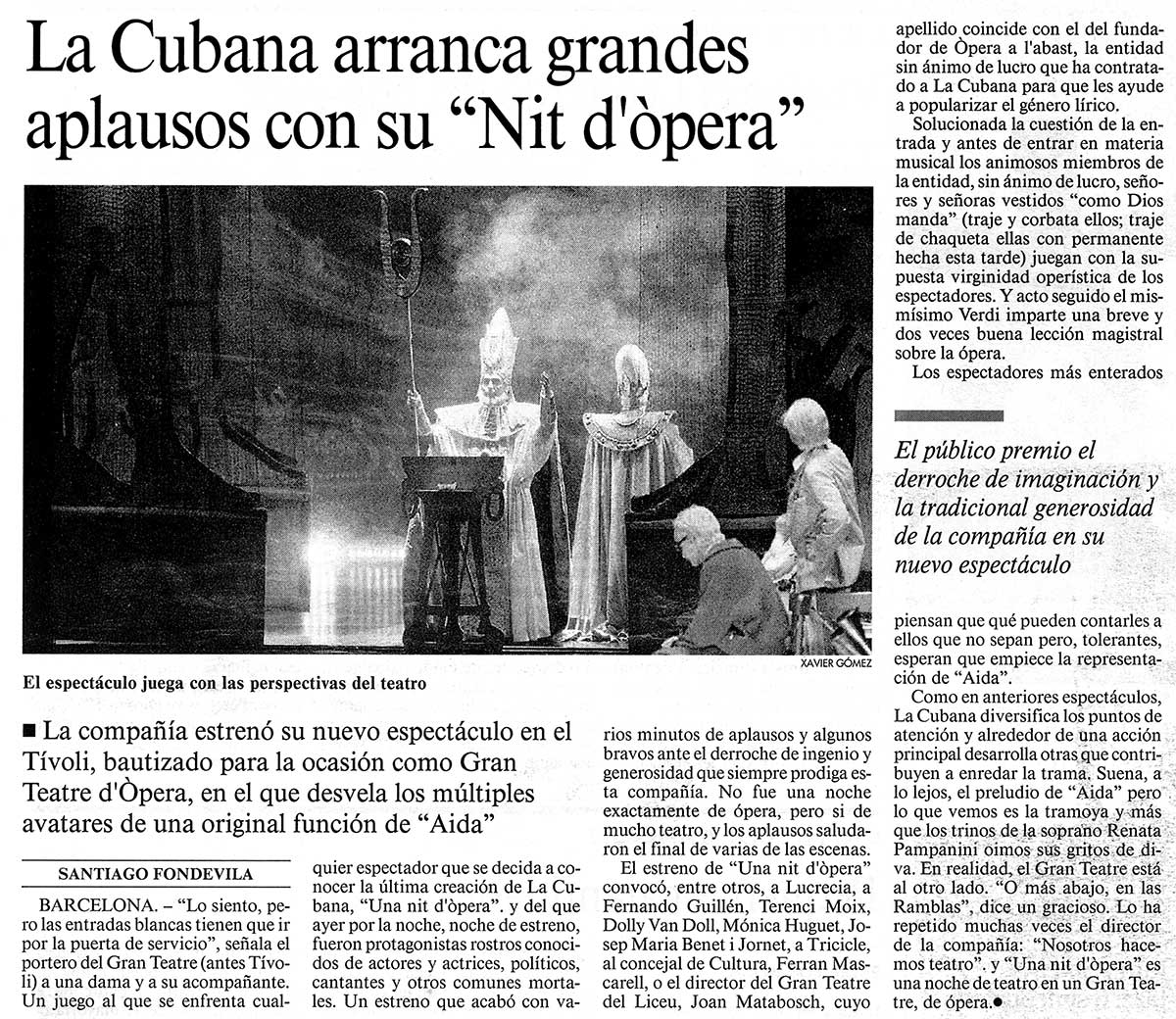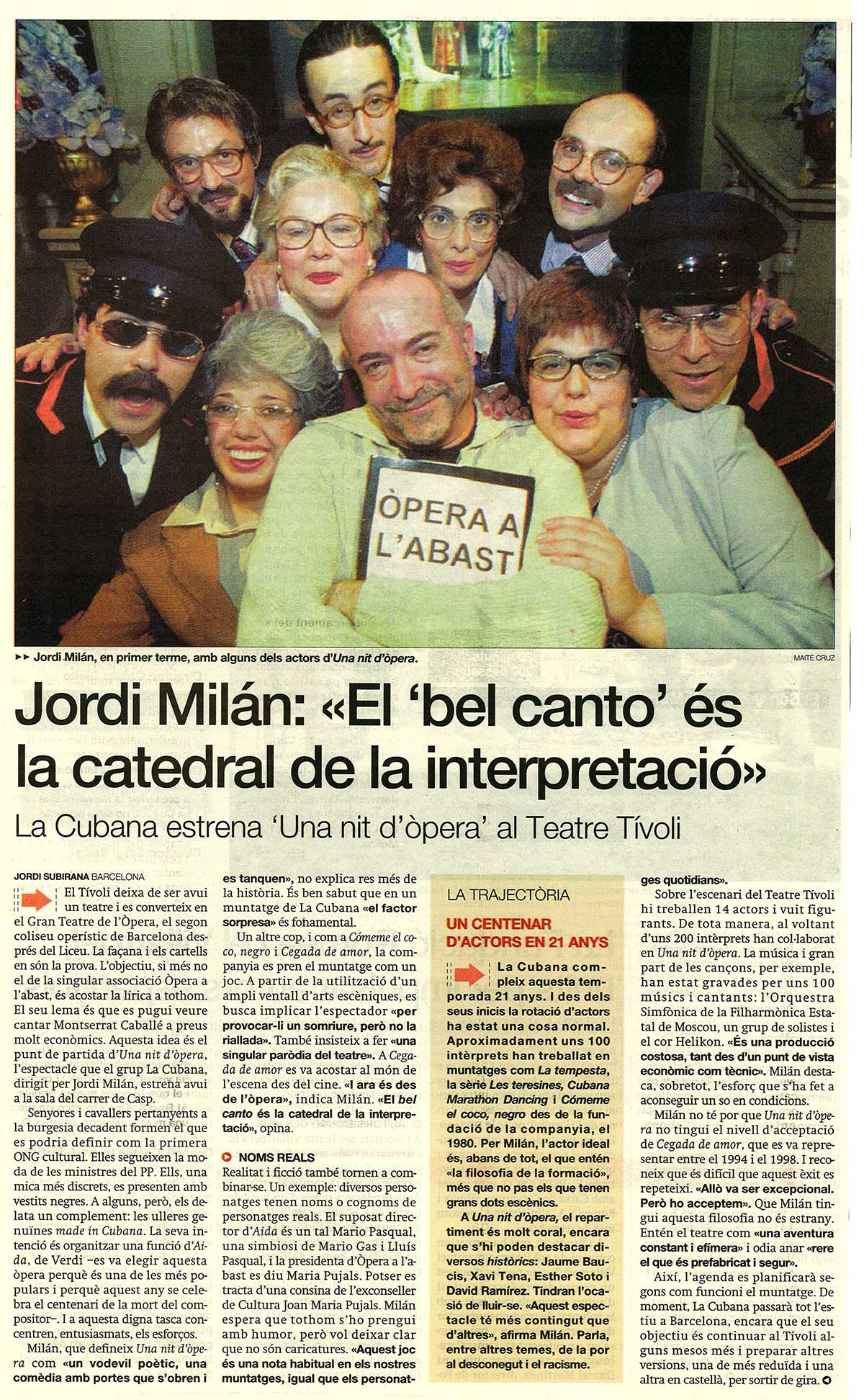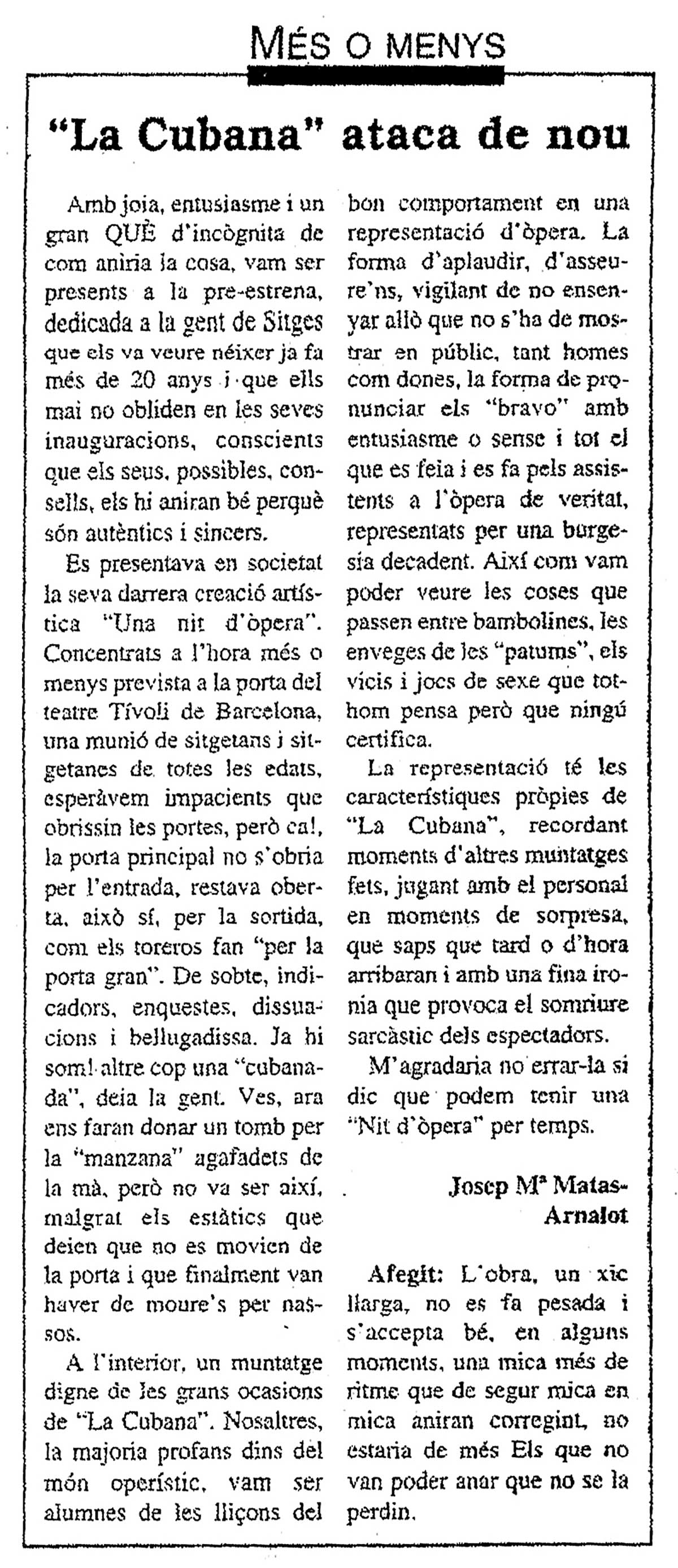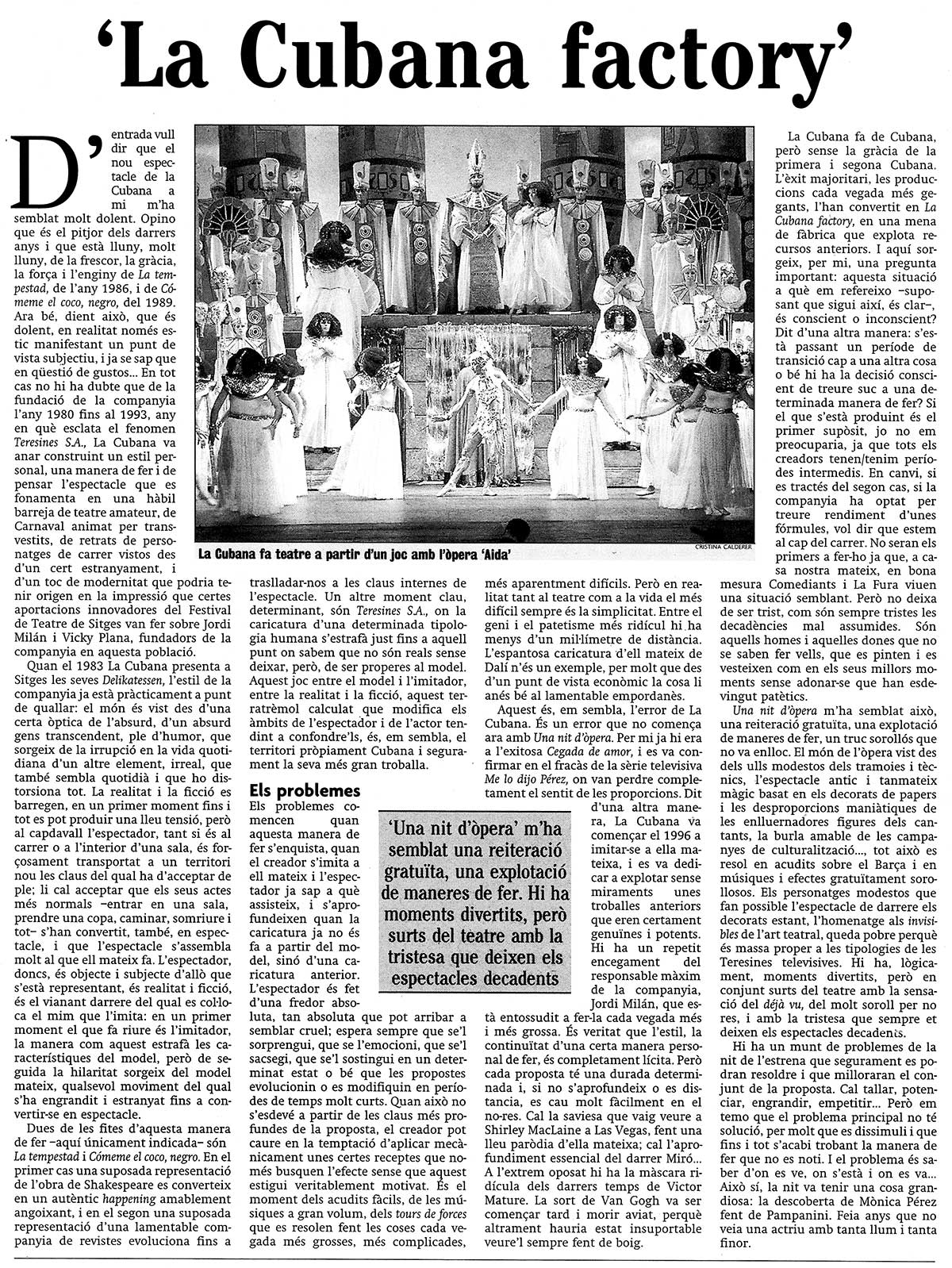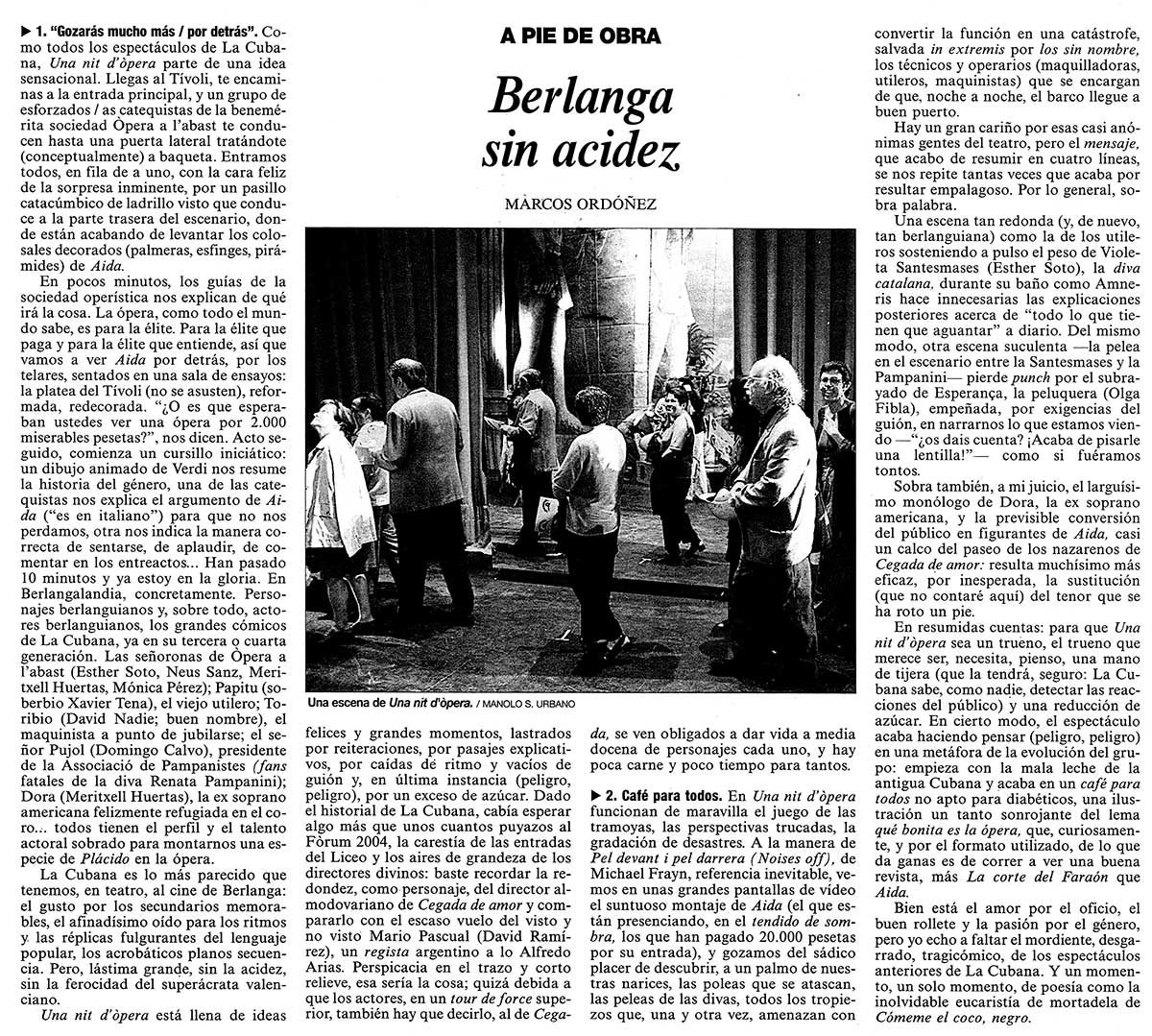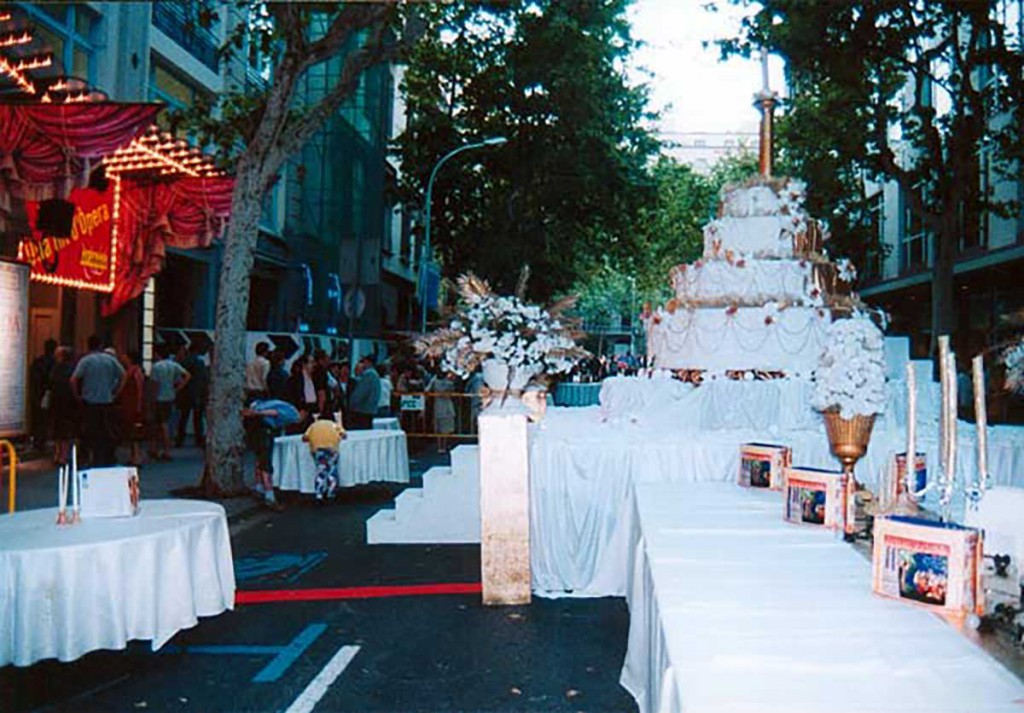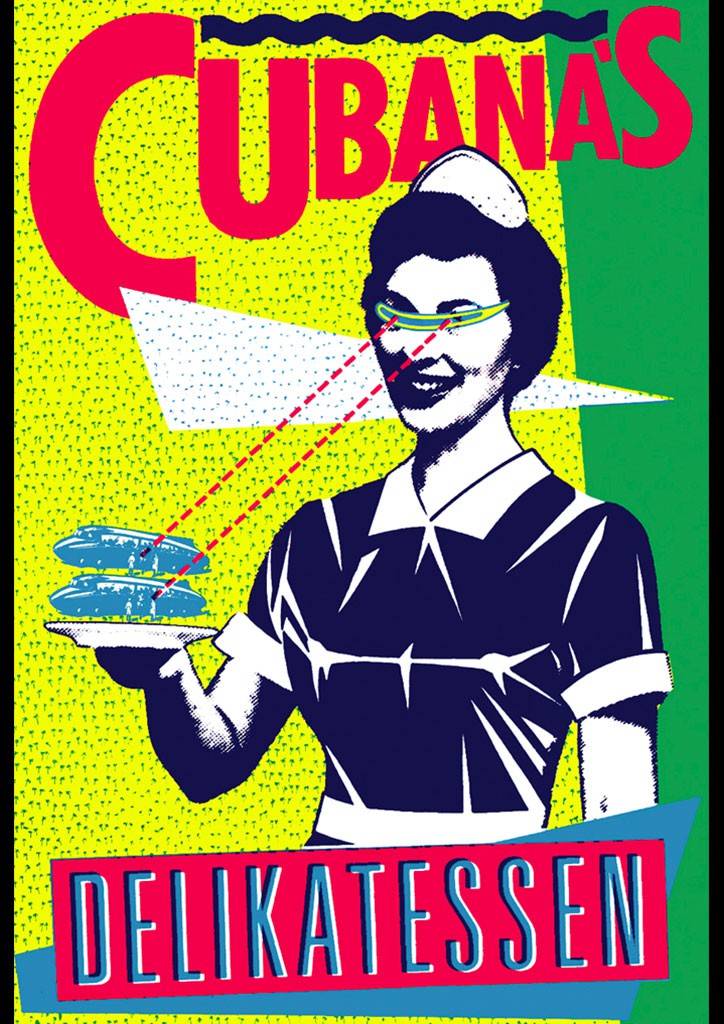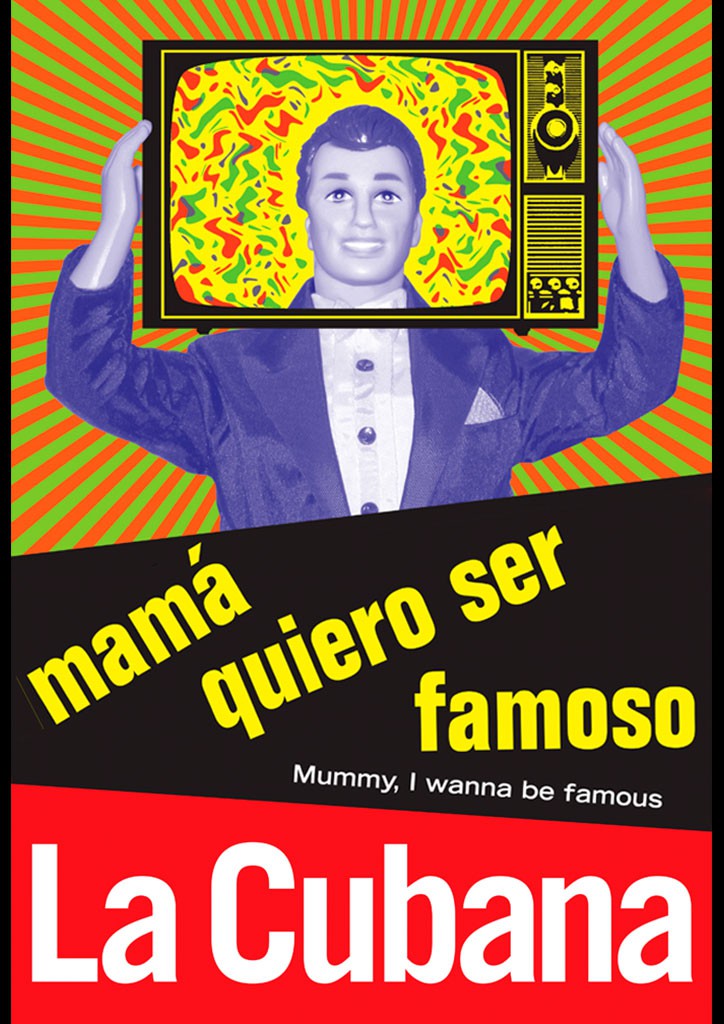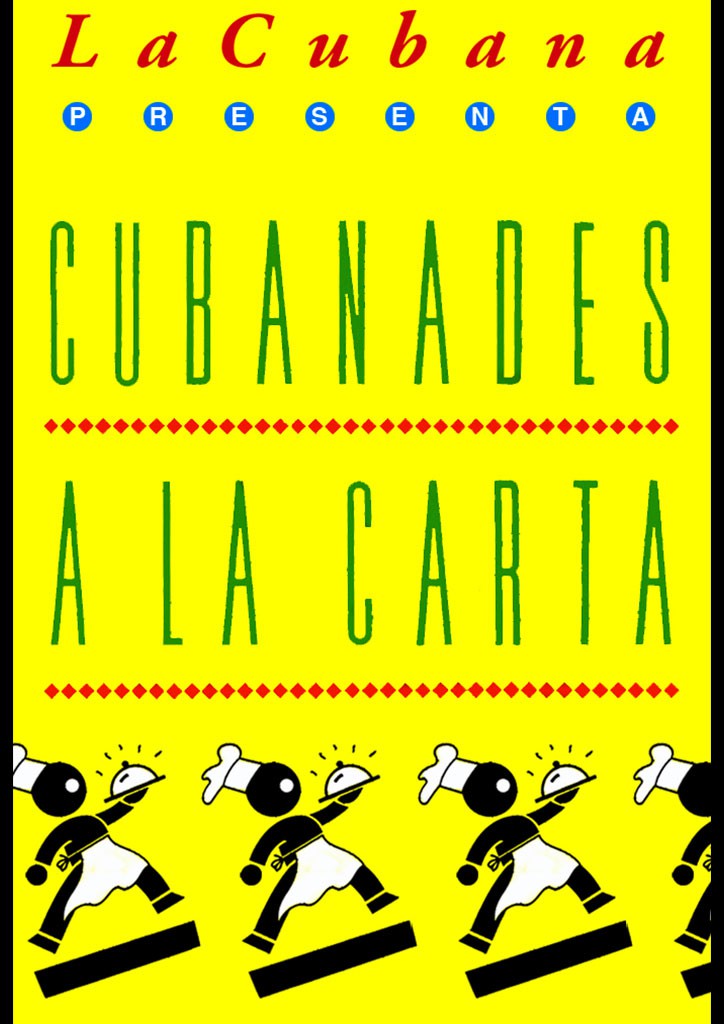Una Nit d’Ópera (Night at the Opera)
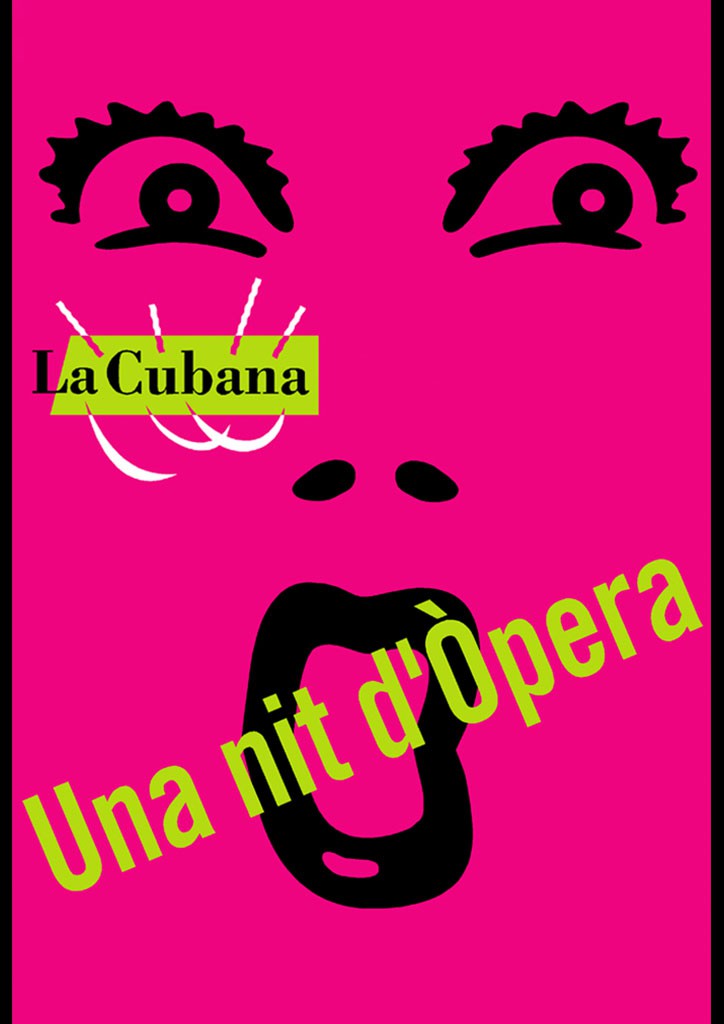
IdeaDuring the performing years of Cegada de Amor, getting in and out the screen, many people requested us to allow them to see the show from the backstage. There was so many people requesting it so, that we had to put a few chairs for them in the backstage. For the five years of Cegada de Amor running, nearly every day we had a row of people watching the goings-on from the backside. From there came to us the idea to write Una Nit d’Òpera. Same thing as always but different. As in some other shows, it is a homage to theatre, or even better, a homage to this artisanship, nearly extinguished, of the theatre making, that we had learned as children: The paper stagecrafts, the sticking, the robes, the gridiron, etcetera.
This time we used the opera for our setting, the theatre’s cathedral. When one thinks about an opera theatre, given its pomposity, one thinks about luxury, brilliance, and lavishness. In the later years, opera has become quite fashionable in our country, many opera theatres have been smartened up. Opulent temples that we all have contributed to its refurbishing and we keep contributing. What a pity though, opera is scarcely enjoyed! Or else, it is a pity that big masses know so little about it. Why would we be interested in something all we know about is that is a boring show where the singers are so fat?
That is why, an organisation called “Òpera a l’abast” (Opera reaching) established by multiple opera friend associations from all over the country, has started a campaign called Una Nit d’Òpera (One night at the Opera) to approach the genre to the masses. “Opera reaching” seize the opportunity to see an opera for a small amount of money (what a theatre ticket costs) taking the advantage that a Grand Opera Theatre is running Aída by Giuseppe Verdi.
Story lineThe audience, ticket in hands, go to the main entrance. But they are not allowed in to that doors: The ticket they are showing is “the cheap one”. They have to get in through the back door. The audience, accompanied by the “Opera Reaching” monitors, walk around the corner to get in through the back door. From then on, they will start a walk through the corridors, dressing rooms, stage… up until they get to the hypothetical unused stalls all covered in white cloth.
Someone from the audience realises that this is not the main hall of the Grand Opera Theatre and demands some explanations. They are informed that they are actually in the back hall, a place used to attend to the rehearsals only. They will be sitting there all the way through the Opera. The main hall is reserved for a “cultured” audience who understands opera and who has paid a ticket six times more expensive than theirs. The audience protests again, but all the theatre staff (stage shifters, hairdressers, tailors, ushers, stage managers, etc) advises them to stay and enjoy the show from the back, as much as they do every night. They are not only just going to learn what opera is, but having the opportunity to watch it all from the backside, they are going to be able to enjoy even a more interesting and curious show. The audience accepts it and stays.
The orchestra starts playing. Aida is about to start. At the very end, after the curtains go up, one can see what looks like the main hall. The singers start singing, but facing the audience backwards. From then on the audience is going to be watching the opera from the back, through a see-through cyclorama, by means of big screens showing what’s being seen on stage, etc. From that moment on, the audience can appreciate all the magic of the opera but backwards. As if we were watching the show through a peephole. The spectator can see the tricks of the stage, how the machinists move the stage around, how the stage technicians arrange the props, the last minute final touch of the wardrobe, the hairdressing or the make-up.
The audience realise on how much those workers love their jobs. They can also see how the struggles are dealt with. Apparently, such struggle passes by unnoticed all the way through the performance, as it is the theatre’s golden rule.
But tonight there are much more problems as the ones that they are used to deal with. So, all the staff starts asking for the audience collaboration, and they make the audience dress as soldiers, priests or even pretend they are opera singers! As a compensation to their collaboration, the staff will provide them with all sorts of accounts of the singer’s private life, gossips about their bits and pieces, and all kind of folklore of the opera world. Between gossip and gossip, and encouraging them to get into the opera world, which is everybody’s heritage, the performance reaches the end. They all together have been partaken in the ephemeral rite of a performance.
The last Aida’s note is heard and after it the clapping from the main hall. Suddenly, all the stagecraft turn around and we can see what until then was facing us backwards. What’s more, all singers turn around to join the scenery and sing to the audience, the spectators from “Opera Reaching”, the big finale. The performance is over.
You can enjoy the show in here:
PREMIÈRE: 12th June, 2001 Teatre Tívoli, Barcelona
PLACES WHERE IT HAS BEEN PERFORMED: Barcelona
PERIOD: from 12th June 2001 to 15th September 2002
PERFORMANCES: 420
SPECTATORS: 250.000
SCRIPT: Jordi Milán
CAST:
Jaume Baucis
Xavier Tena
David Ramirez
Neus Sanz
Esther Soto
Meritxell Huertas
Olga Fibla
Mònica Pérez
Ota Valles
David Fernández
Toni Torres
Domingo Calvo
Carles Díaz
Xavier Siles
EXTRAS:
Rut Camps
Joan Coll
Jaume Gómez
Albert Grácia
Marçal Maixenchs
Francesc Parra
Pepa Porta
Pol Quintana
DIRECTOR: Jordi Milán
TECHNICAL STAFF
Opera Adviser: Ignacio Aranaz
Stage design: Castells Planas and Jordi Bulbena
Making and Stagecraft: Castells Planas
Characterization and Wig creation: Joan Alonso
Wardrobe: Cristina López
Opera wardrobe: Cristina López, Andreu Sánchez
Props: Xavi Tena
Design and creation cartoon video: Víctor Luna – Animandus
Graphic design: Raúl Pascuali – Dockland
Choreography: Leo Quintana
Light design: Keith Yetton (A.A.I.), Glòria Montesinos (A.A.I.)
Sound design: Marc Sardà
Opera music arrangements: Gregorio Salvador Rodríguez
Music and lyrics closing song: Joan Vives
Assistant directors: Carol Verano, Jaume Baucis, Xavi Tena
Executive producer, promotion, press and sponsorships: Victòria Sanz
Idea and direction of the show: Jordi Milán
Production assistant and Press: Àgia Luna
Secretary and assistant producer: Laia Royo
Administration: Natalia Morillas
Special effects Opera: Mag Lari
Prosthesis: Margarit
Retro projection editing: Josep Mª Marín
Structure building: Pascualín, S.L.
Sonorised by: PRO3 & Co.
Audiovisual equipment: RGB
Technical coordinator: Angel Márquez
Video making: CAPA LatAm
Pictures: Xavier Pastor
Wardrobe team: Paco Calvet, Lolita Cloquell, Marcella Frediani, Juan Conesa
Make-up and hairdressing: Joan Alonso
Wigs: Damaret, Carles Montosa
Stage Manager: Sílvia Martorell
*Tito Lucchetti substitues Sílvia Martorell
Sound technician: Ezequiel Pocchettino
*Jordi Blanco substitutes Ezequiel Pocchettino
Light technician: Robert Garriga
The Opera AIDA was played by:*
The Moscow Philharmonic Symphony Orchestra
Directed by Vladimir Ponkin
Soloists
Marina Karpechenko – 1st Aida
Ekaterina Nefedova -2nd Aida
Elena Okolissheva – 1st Amneris
Olga Tereshnova – 2nd Amneris
Sergei Donetz -1st Radamés
Nikolay Dorozkin – 2nd Radamés
Konstantin Khristov – Pharaoh
Sergei Toptigin – Ramfis
Andszei Beletsky – Amonasro
Olga Zirova – Priestess
Chorus OPERA HELICÓN
Directed by Tatjana Gromova
Acknowledgements:
Teatre de la Pasió d’Olesa
Auditori de Cornellà
Teatre Nacional de Catalunya
Gennady Dzubenko
Al Víctor
Marcel Garriga
Angel Gasch
That was the most complicated shows of all, even though it was only presented at the Teatre Tívoli, Barcelona, it generated many an anecdote:
The Music of Aida was recorded in Moscow. We had chosen two sopranos to sing the part of Aida, one to give voice to the character of Renata Pampanini and the other soprano gave voice to the character that played the substitute. One day, we arrived to the rehearsal to see the substitute rehearsing ¡Oh Patria mia! She was a young girl with a prodigious voice. She was flying through it. We still remember her face when we told her to stop singing so well, as she was supposed to sing it badly, squeaking here and there, and so on. Well, she couldn’t believe it. At the end, though, she squeaked marvellously.
One of the most peculiar things that disturbed audience was the fact that we were not allow for them to enter the theatre through the main door of the Tivoli Theatre in Barcelona. The characters of “Opera Reach” and the false ushers explained them as they came in that one could only go through the main entrance if it held the red ticket. As for them, they had the cheap ones, so they had to get in through the back door. One day, on explaining some ladies the same story, they felt they had to confront the usher and replied: “¿If those are the cheap ones, how much are the expensive ones?” “20.000 pesetas”-he answered- Then one of the ladies went straight to the Box Office and said: “Give me two 20.000 pesetas tickets!” The box officer didn’t know what to do, but at the end, and at all times behaving as a great actress, she replied: “I’m sorry, lady, but they all are sold out, but I can assure you that with your cheap tickets you’re going to enjoy the show as well”.
First Anniversary of the show “Una Nit d’Òpera” at Teatre Tívoli, Barcelona
For such occasion, we invited for free the first thousand people to get to the theatre that night. Hours before the show there was a huge amount of people queuing along the street. The audience received Renata Pampanini with a great ovation at the end of the show and she invited the audience to pick a candle and go out to celebrate the anniversary. On the street, we organized a cold meal for everybody there. Later on, all the actors encourage the audience to light the candles, participate to the collective blowing and sing the traditional “Happy Birthday” song.
